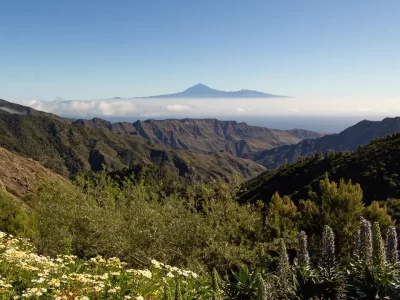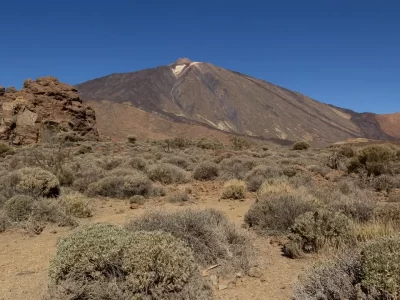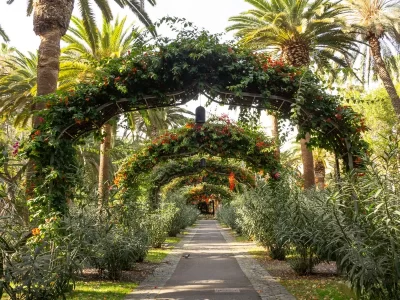Tenerife is the largest of the Canary Islands and it’s also where you’ll find Spain’s highest peak (Mount Teide).
Amongst the unique things to do in Tenerife you’ll find beautiful botanic gardens, beaches where you can escape the crowds, hiking trails crossing desert regions and cloud forests, and excursions to see marine life.
During the two weeks I stayed on this beautiful island I also walked along towns with lovely historic centres where you can admire pretty buildings and squares.
Disclosure: This post contains some affiliate links. If you make a purchase through those links I will earn a commission at no additional cost to you (zero, nada). To check the full disclaimer, click here.
This is what to see and do in Tenerife (beyond water parks and the resorts)
Table of Contents
Visit Icod de Los Vinos
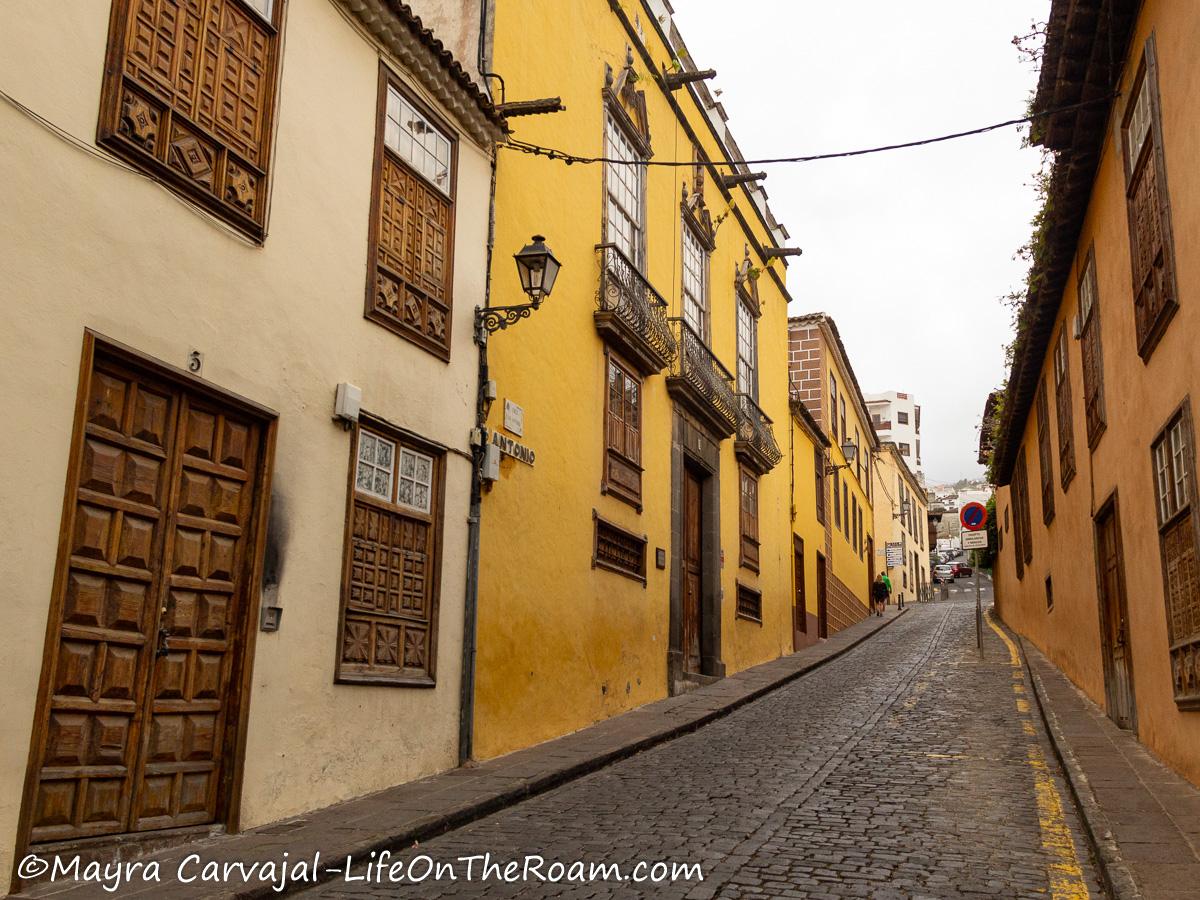
You’ll fall in love with the historic centre of Icod de Los Vinos as you walk its cobblestone streets and see the traditional architecture of the Canary Islands.
Wooden doors and windows decorate the houses, painted with earthy tones, showing late neo-classical details and a Mudejar influence.
And some wooden balconies are truly a work of art.
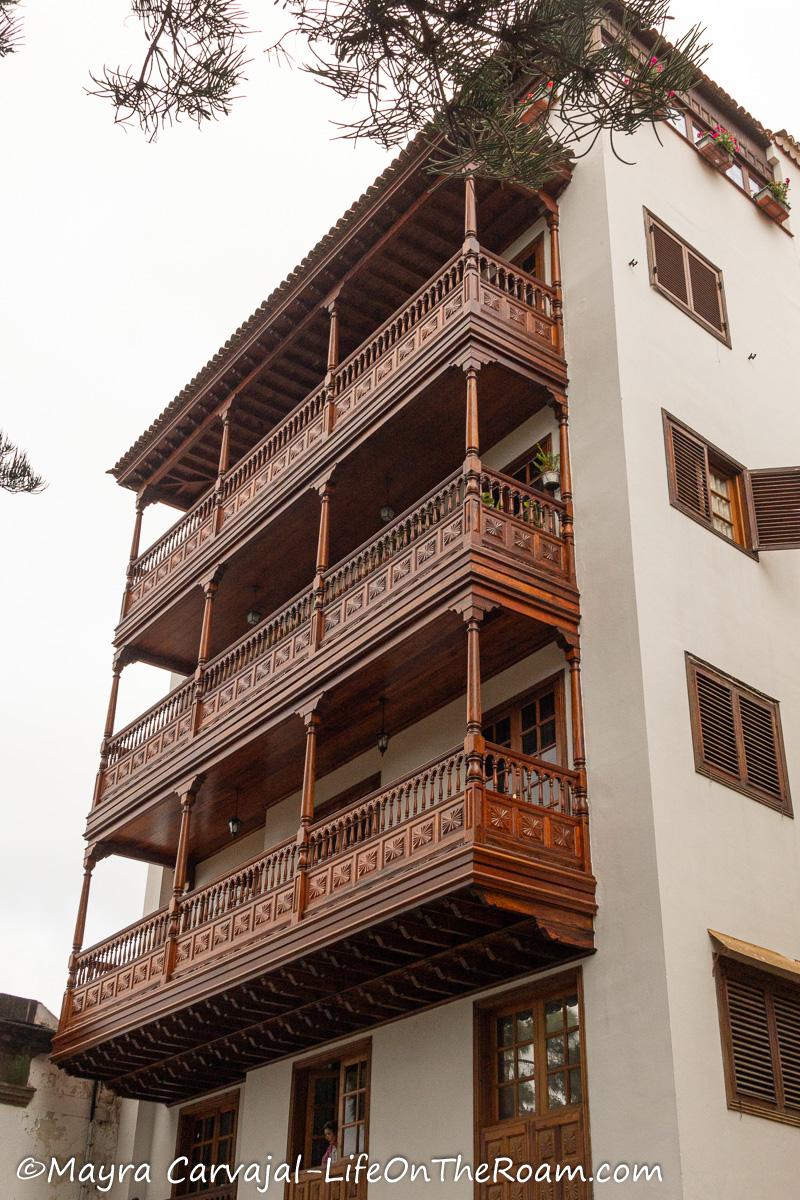
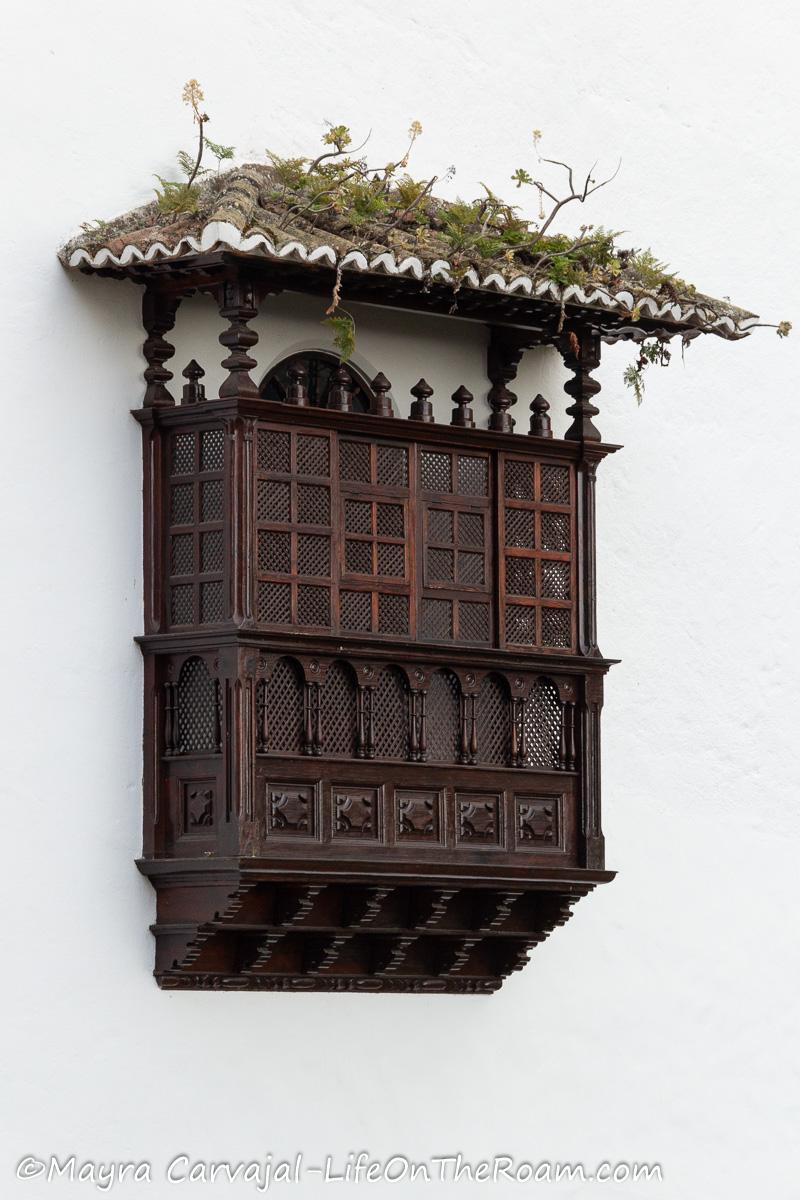
Stop by the Andrés de Lorenzo-Cáceres square, which construction started in the 16th century. It’s a park-like square with fountains and many exotic trees such as the Pandano trees from Madagascar and a giant Ficus from Australia.
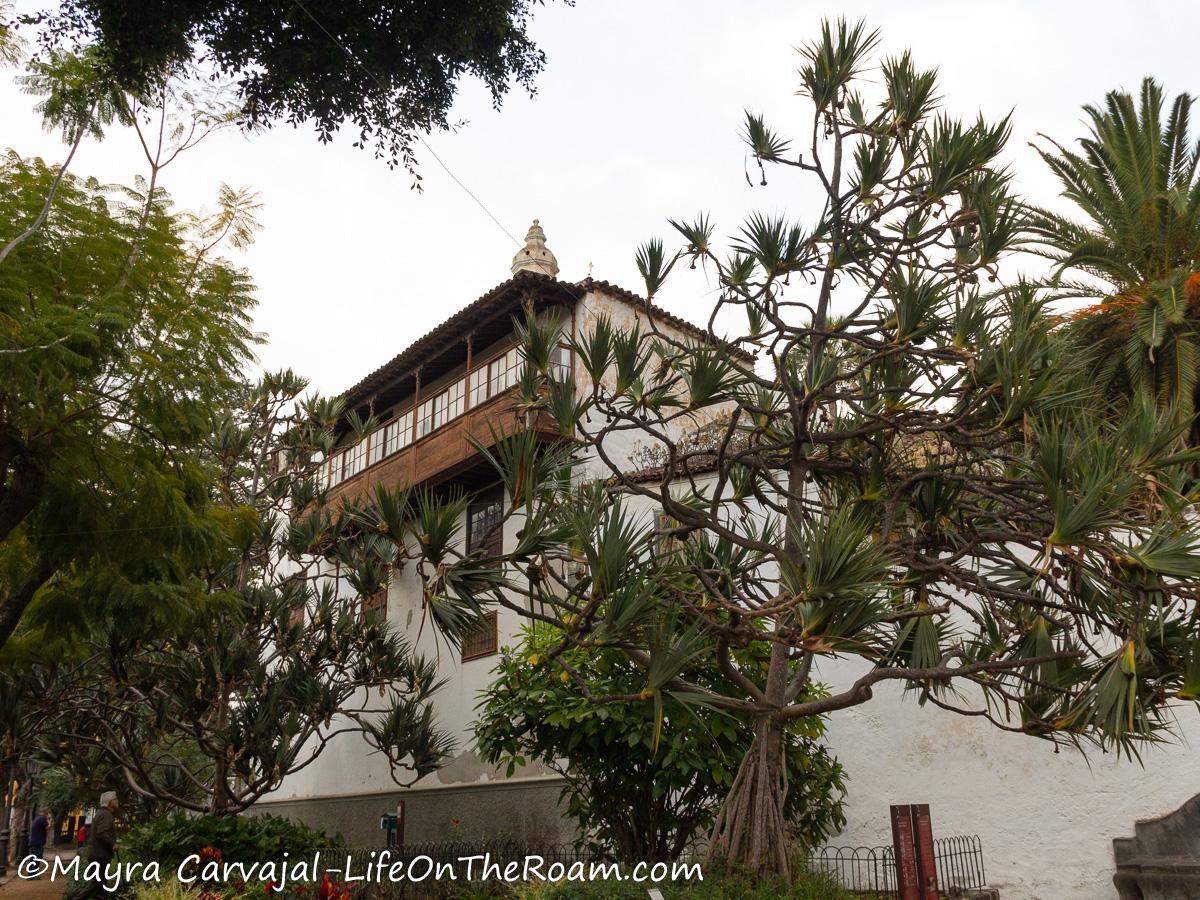
There you’ll find the San Marcos Church, from the 1500s, with a late Renaissance style façade in stone.
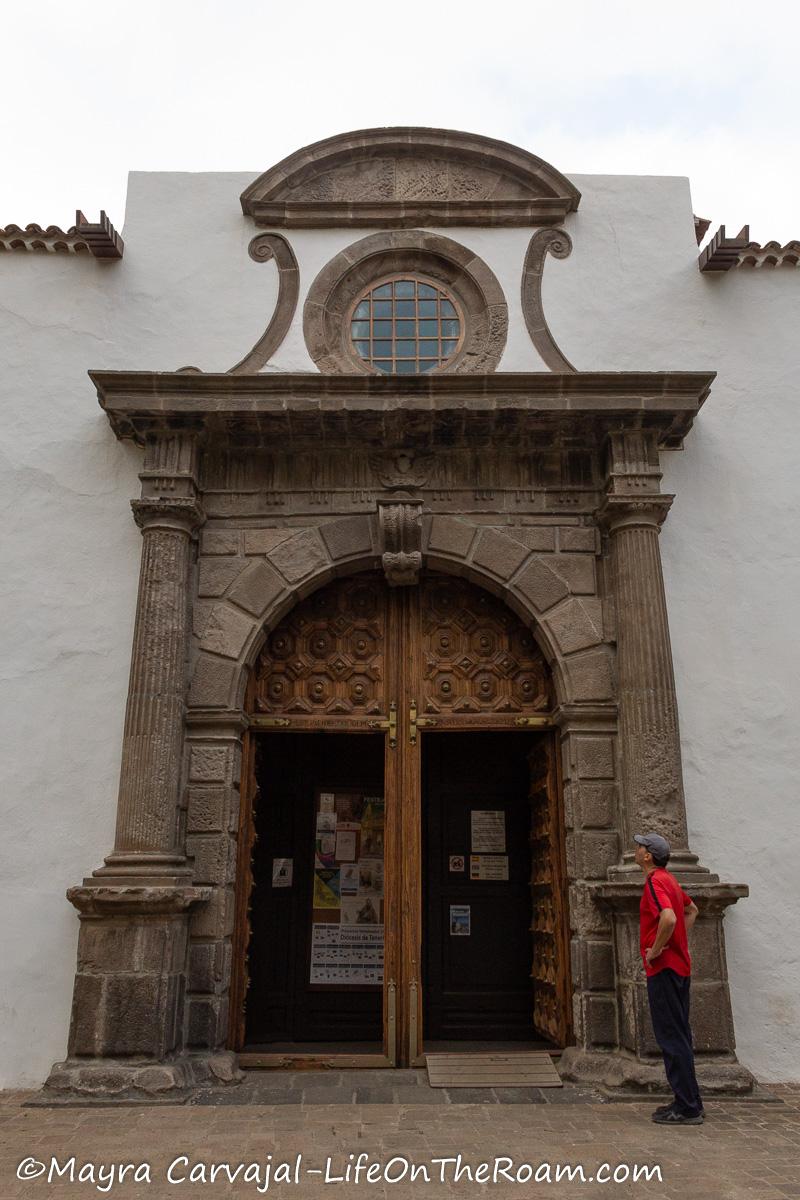
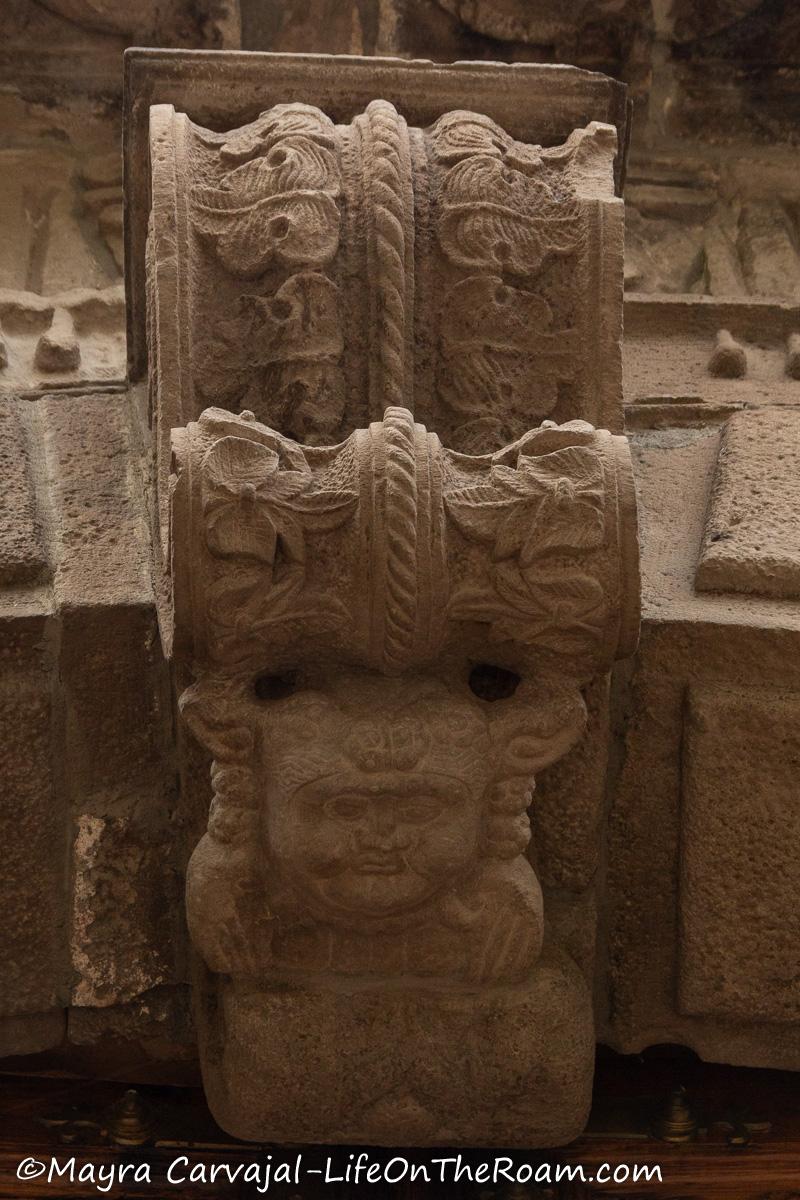
You can also visit the Icod Dragon Tree, a millenary tree you can read more about below.
Stop at The Dragon Tree Park (Drago Milenario)
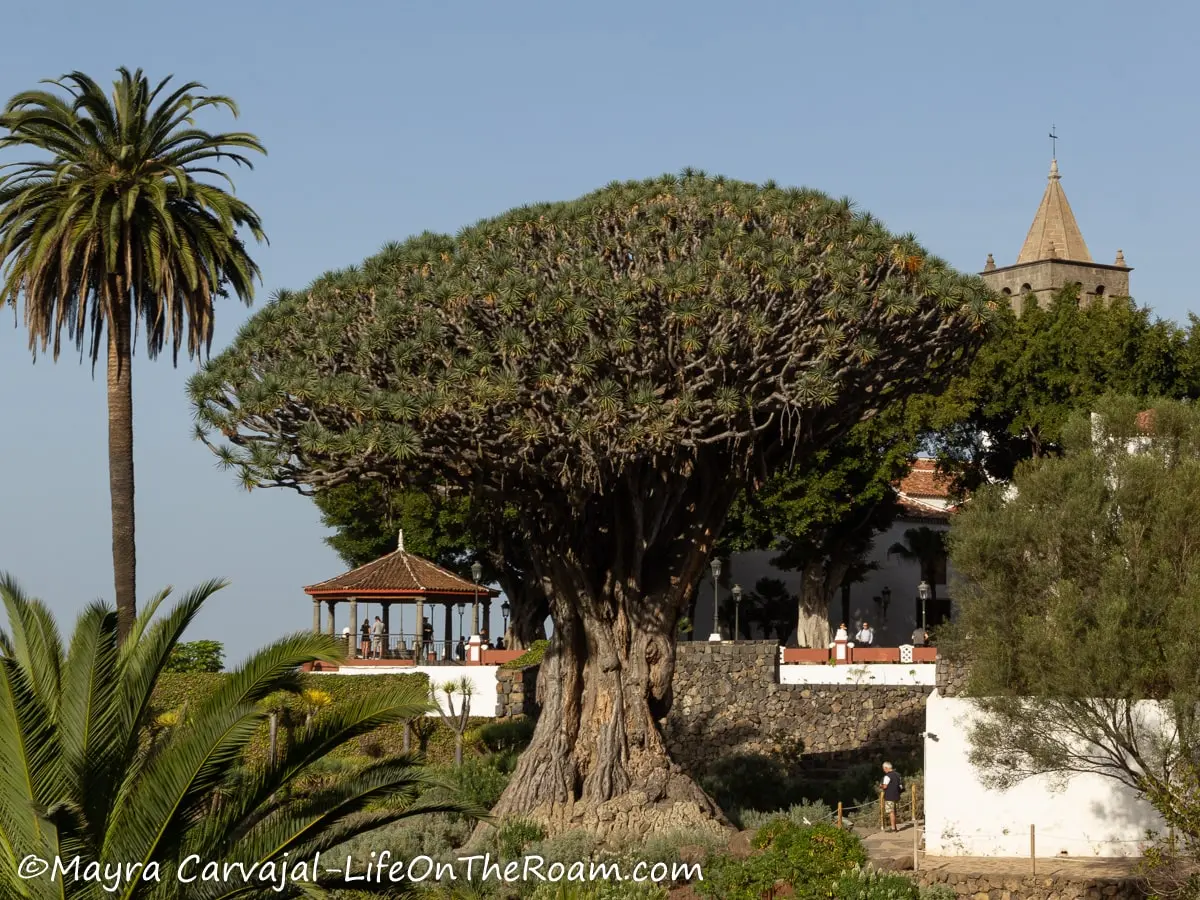
The Millenary Dragon tree is the queen of the prom in this park located in the town of Icod.
As you can guess from its name, this National Monument is around 1,000 years old, the oldest and largest living dragon tree and one of the oldest trees in the world.
At 20 metres (65 feet) high and with a 10-metre (32-foot) trunk, the Drago (dracaena draco) looks quite striking.
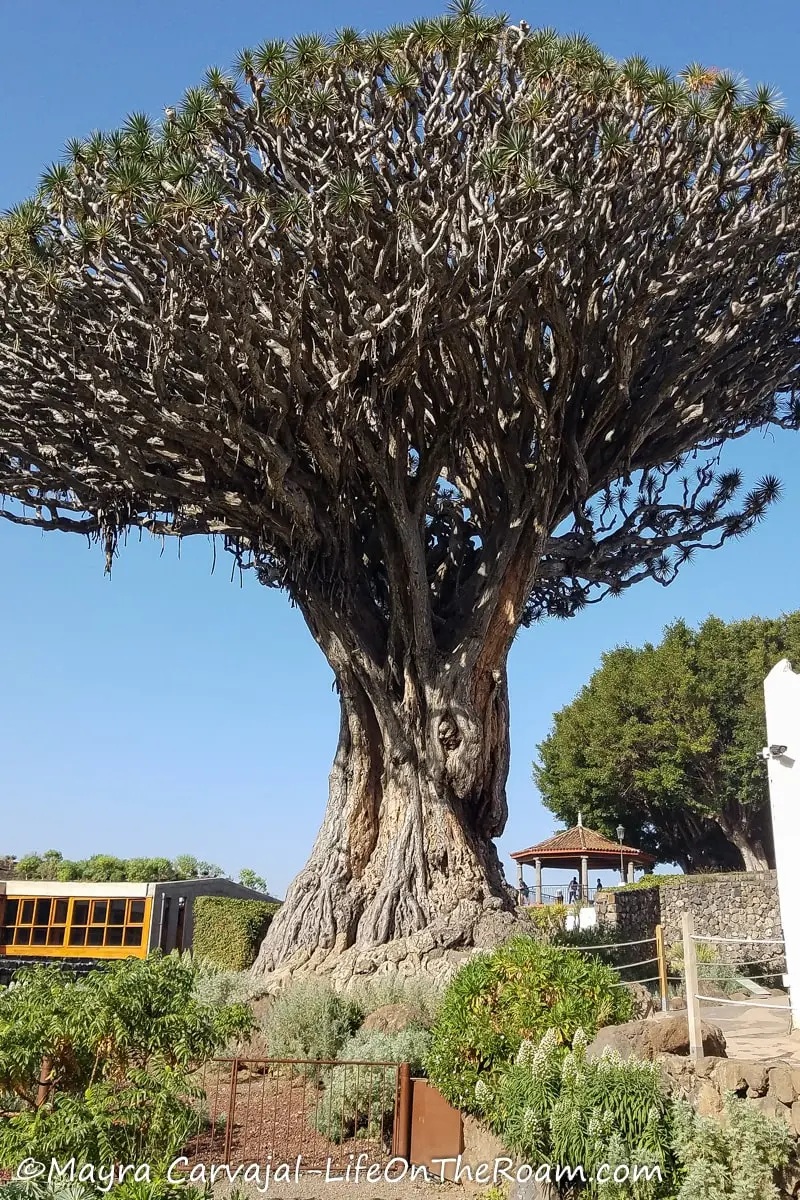
If you add the fact that the sap is red, that the twisted roots look like a nest of snakes, and that it has more arms than a squad of squids, it’s easy to see why dragon trees are the subject of myths and legends.
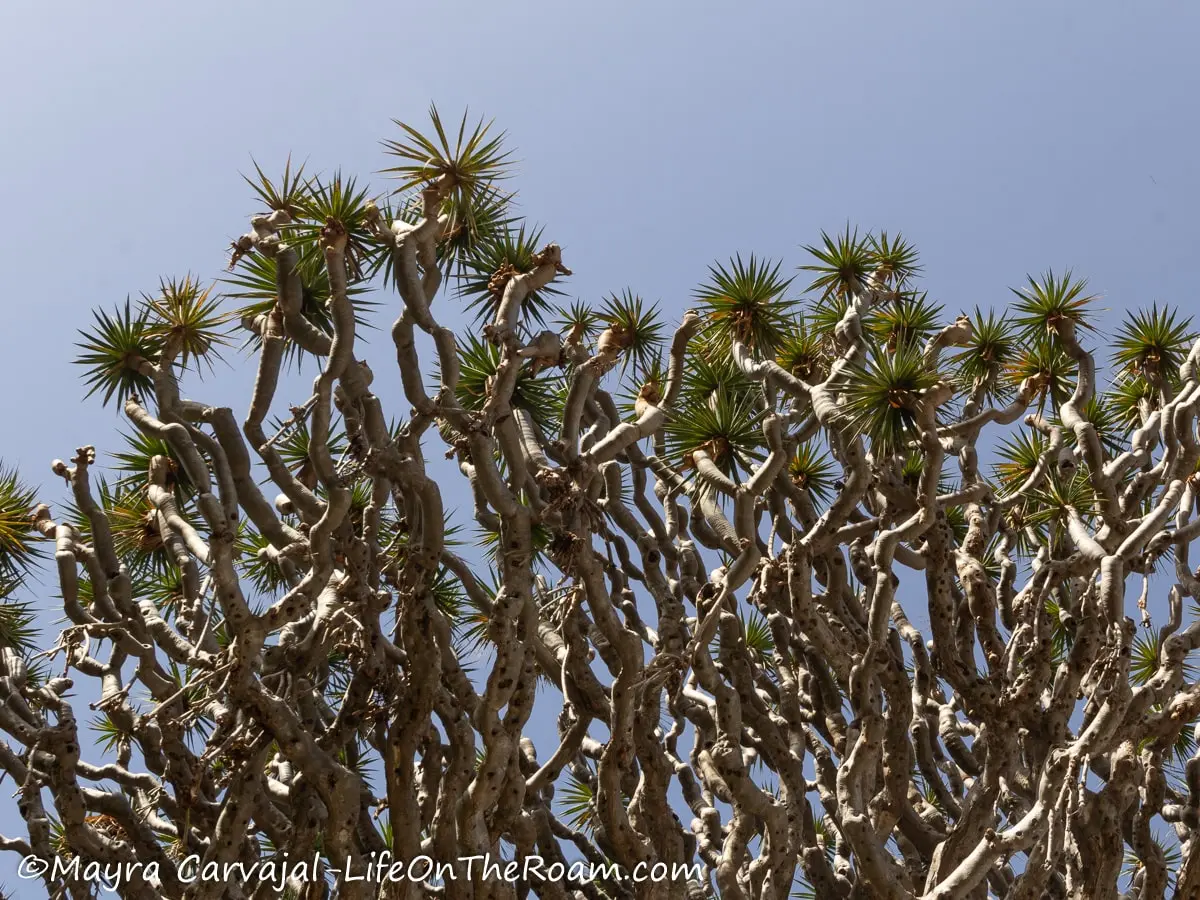
You can catch a distant glimpse of the tree from the street, but I think the small entrance fee is worth for having the chance to get closer (from a few metres away) to such an old and unusual tree.
In addition to the old drago, the park has short paths that traverse a small forest where you can spot birds, a medicinal and spice garden, and a section with younger dragon trees.
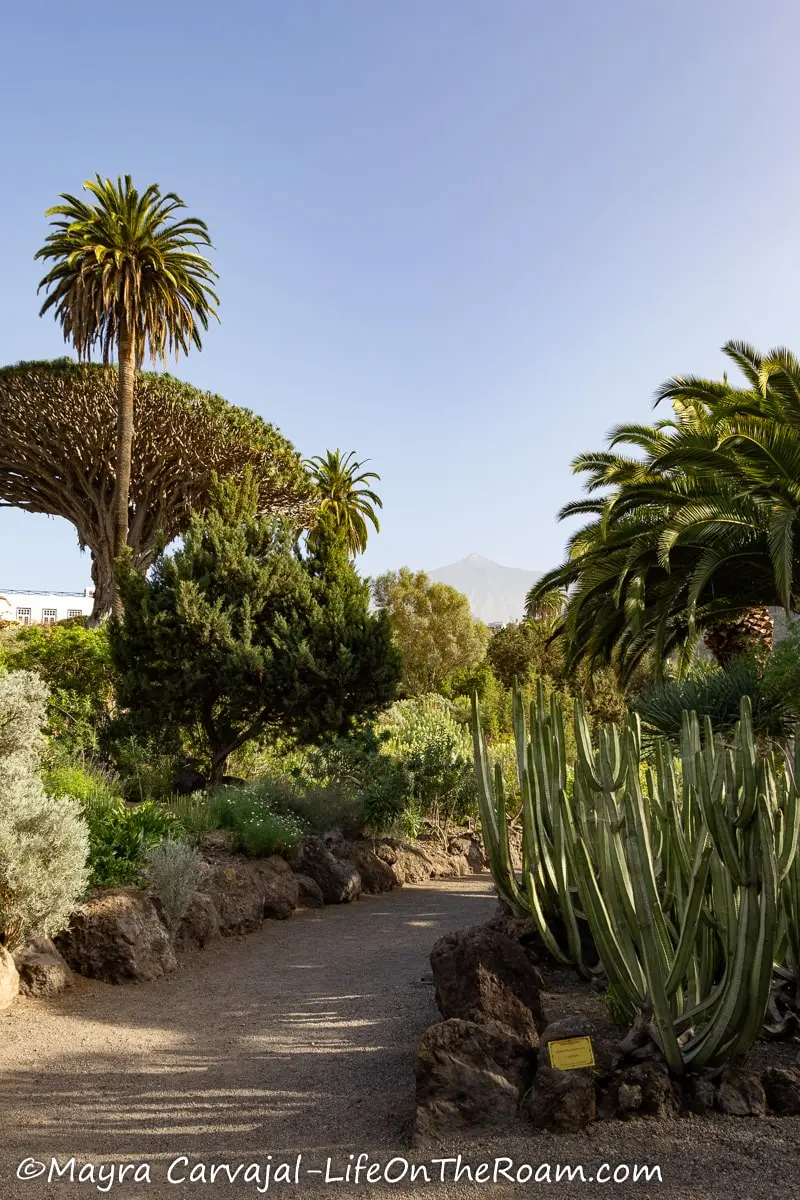
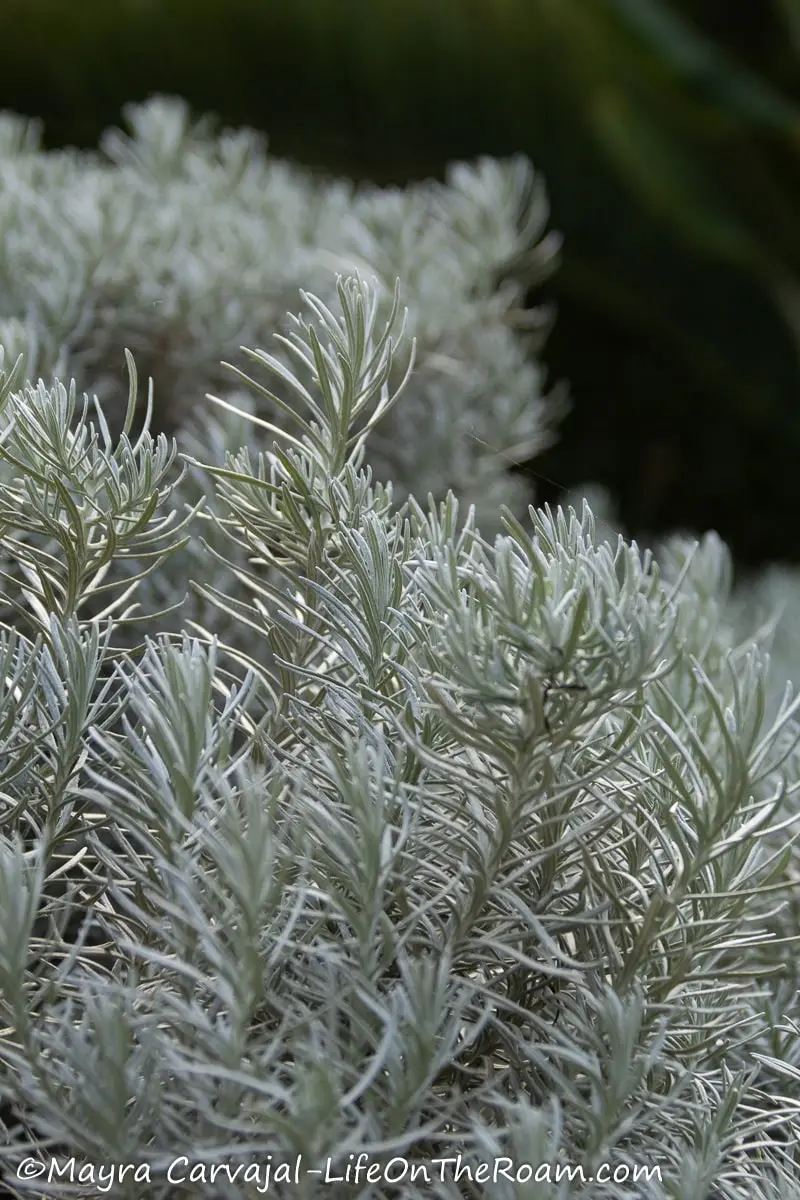
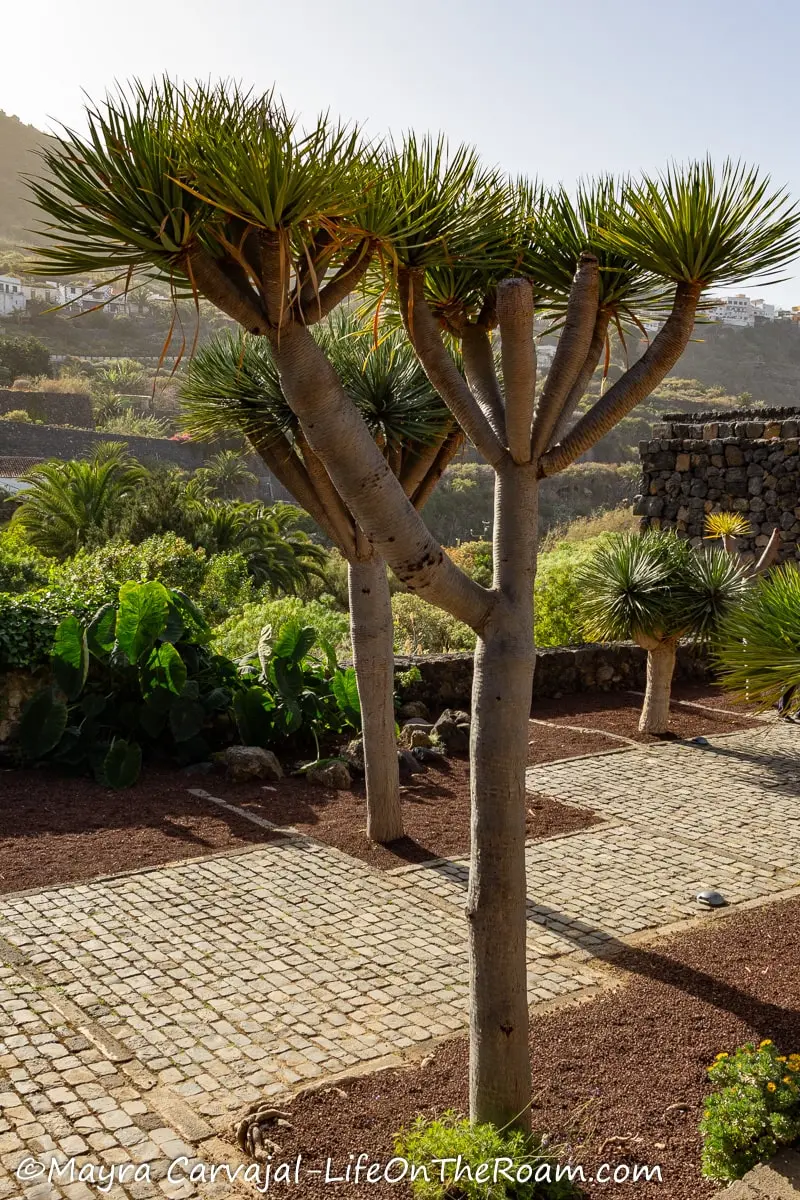
You can also stop at a lookout with views of Mount Teide and the sea, a cave showing the funerary traditions of the Guanches (the indigenous peoples of the Canary Islands), and a café and store that sells local delicacies.
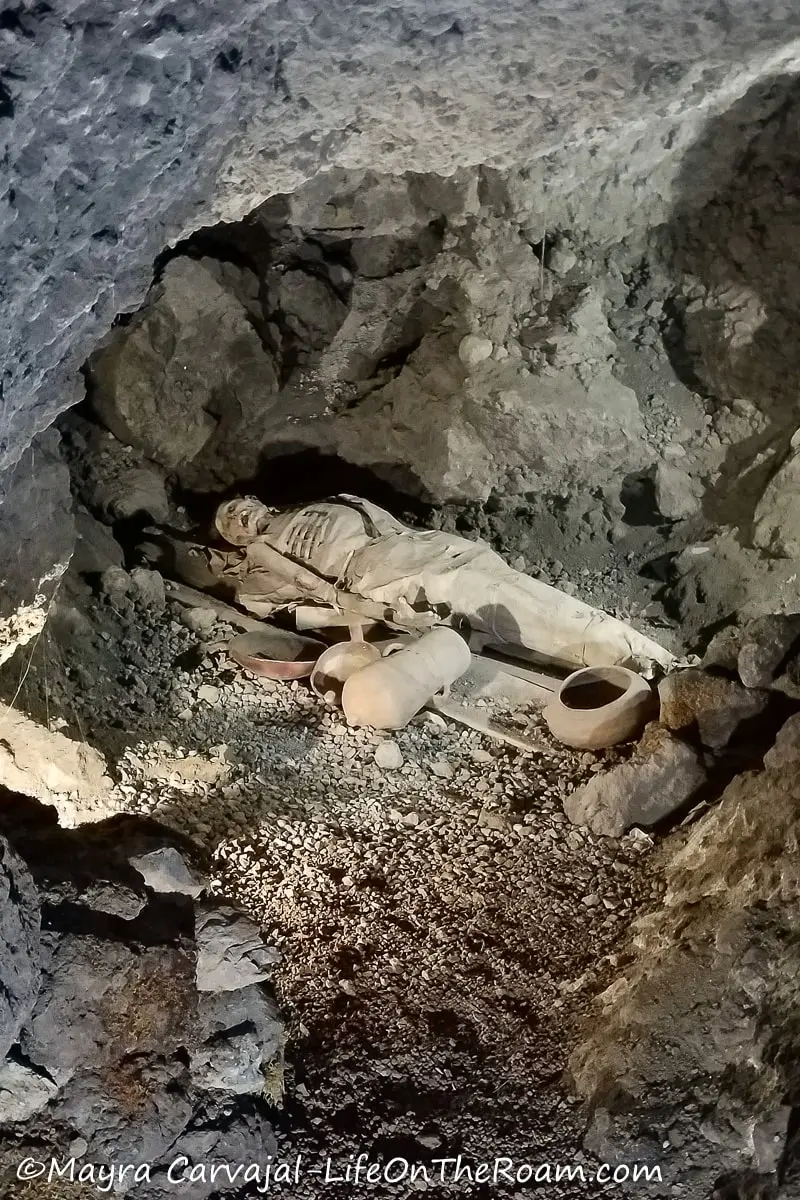
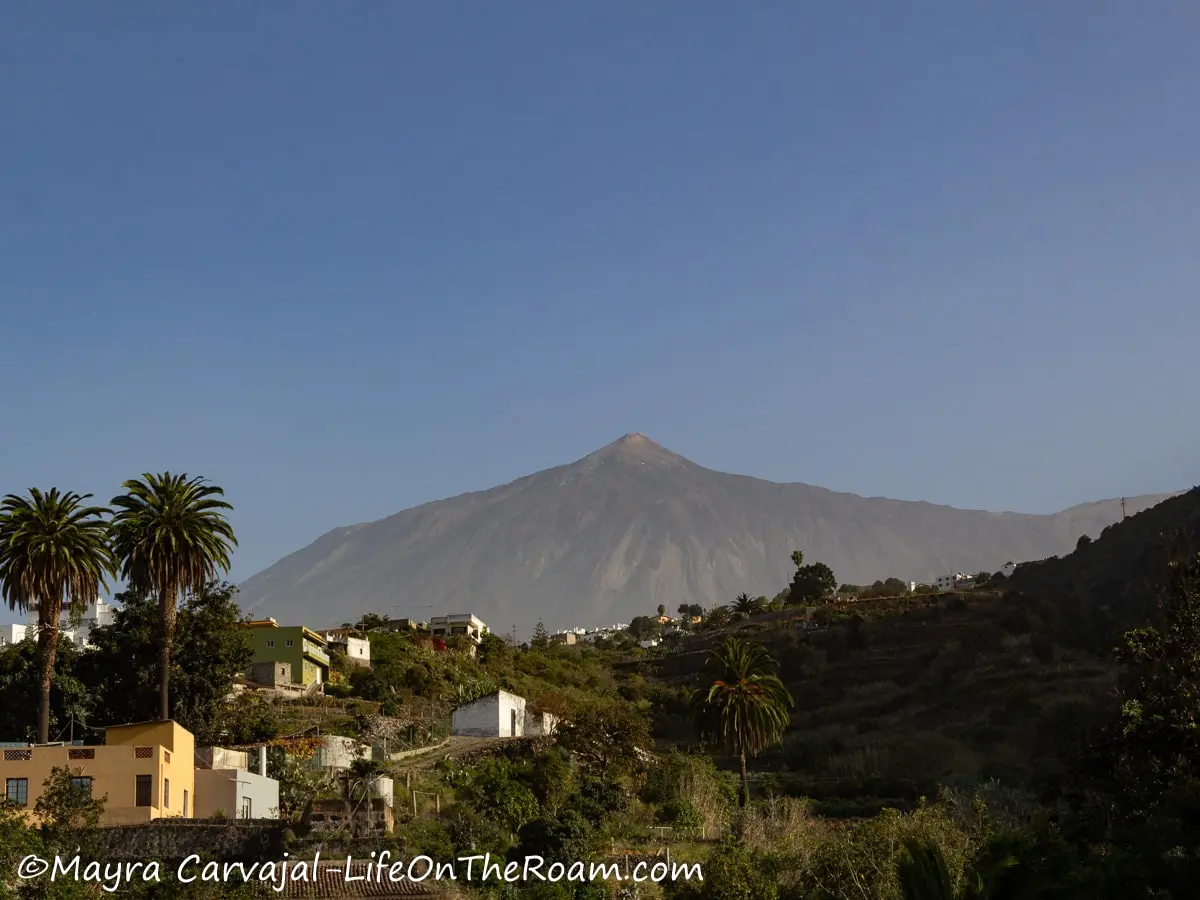
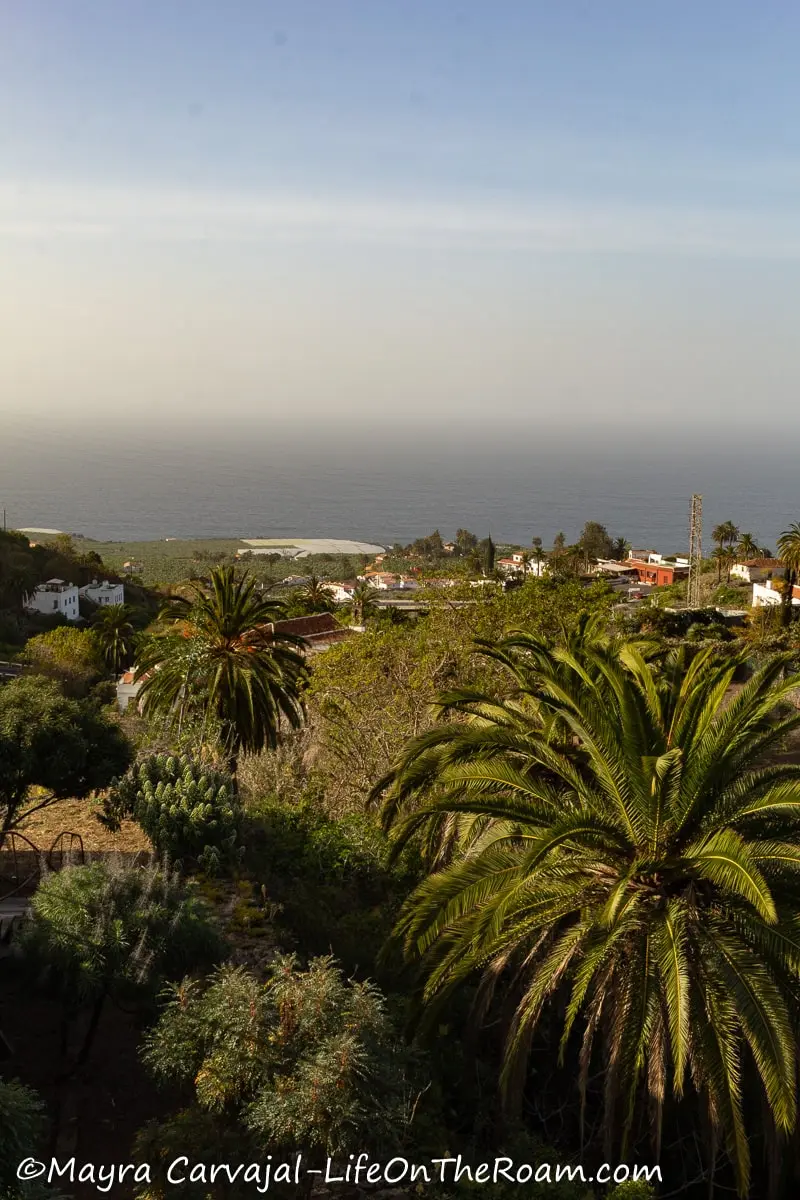
Plaza de la Constitución 1, Icod de los Vinos. Open every day: 9AM-6PM (hours vary per season); General admission: €5
Stroll Along the Botanical Garden of La Orotava
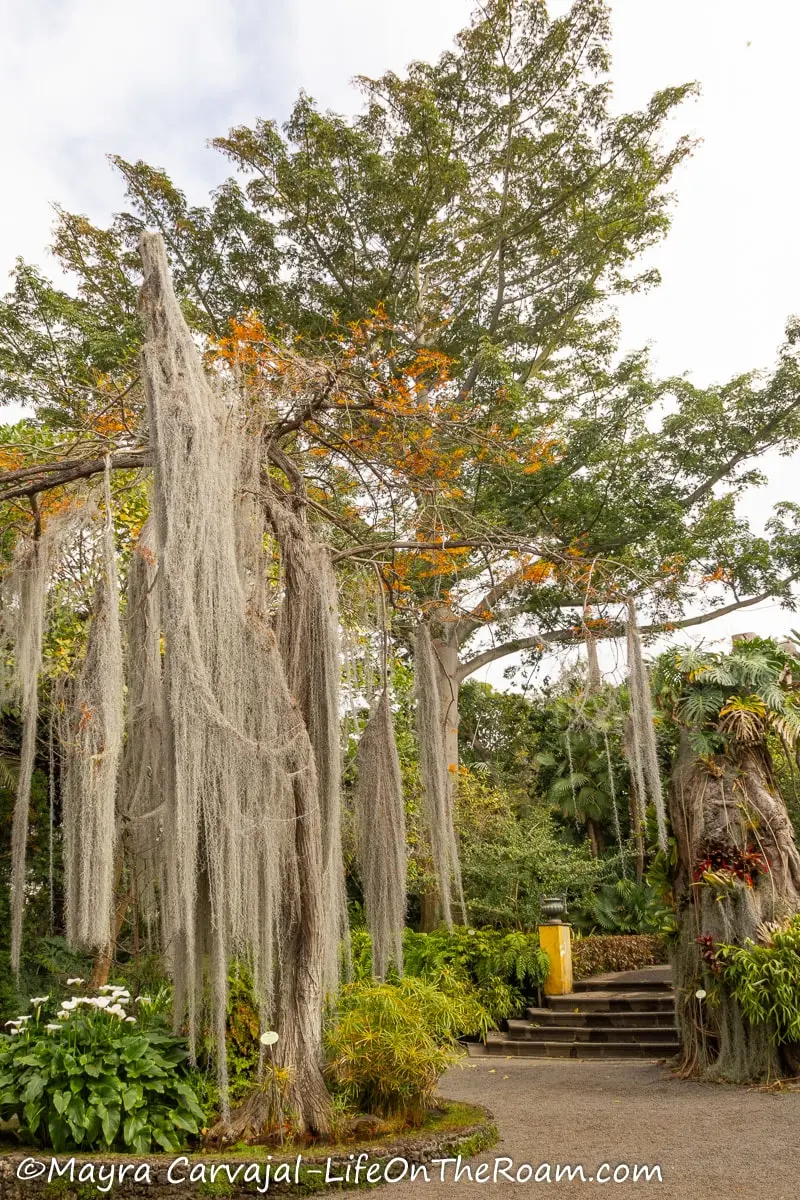
Look at all the colourful plants I brought back from my expeditions across the ocean! What should we do with them?
It was 1788 and Alonso de Nava y Grimón, the Marquis of Villanueva del Prado had an idea of what to do with the Spanish explorers’ findings.
Let’s create a garden to care for and display these tropical plants from far away places.
King Charles III signed a royal decree in 1792 and just like that one of Spain’s oldest gardens was born.
Stroll along the property to see mature trees, gorgeous bromeliads, palms, wild figs and tropical plants from Mexico, Ecuador, South Africa, Australia, Brazil, Bolivia, India, and more.
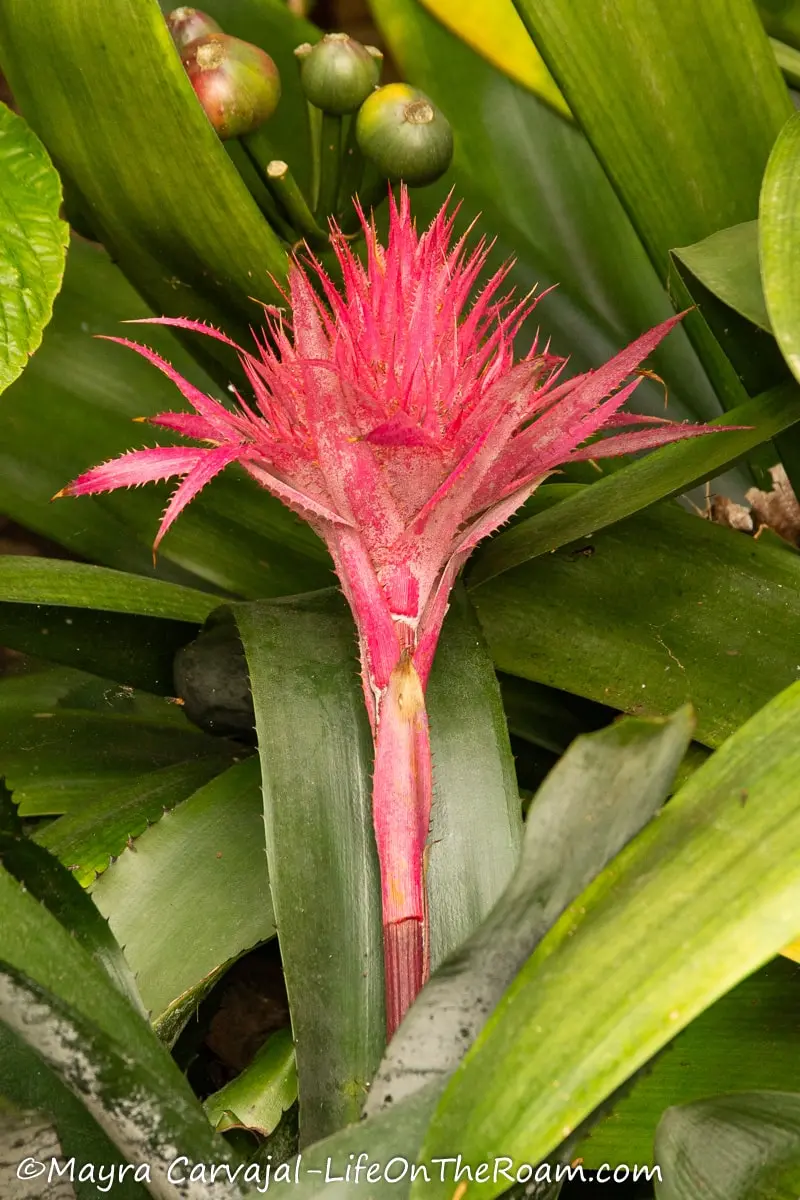
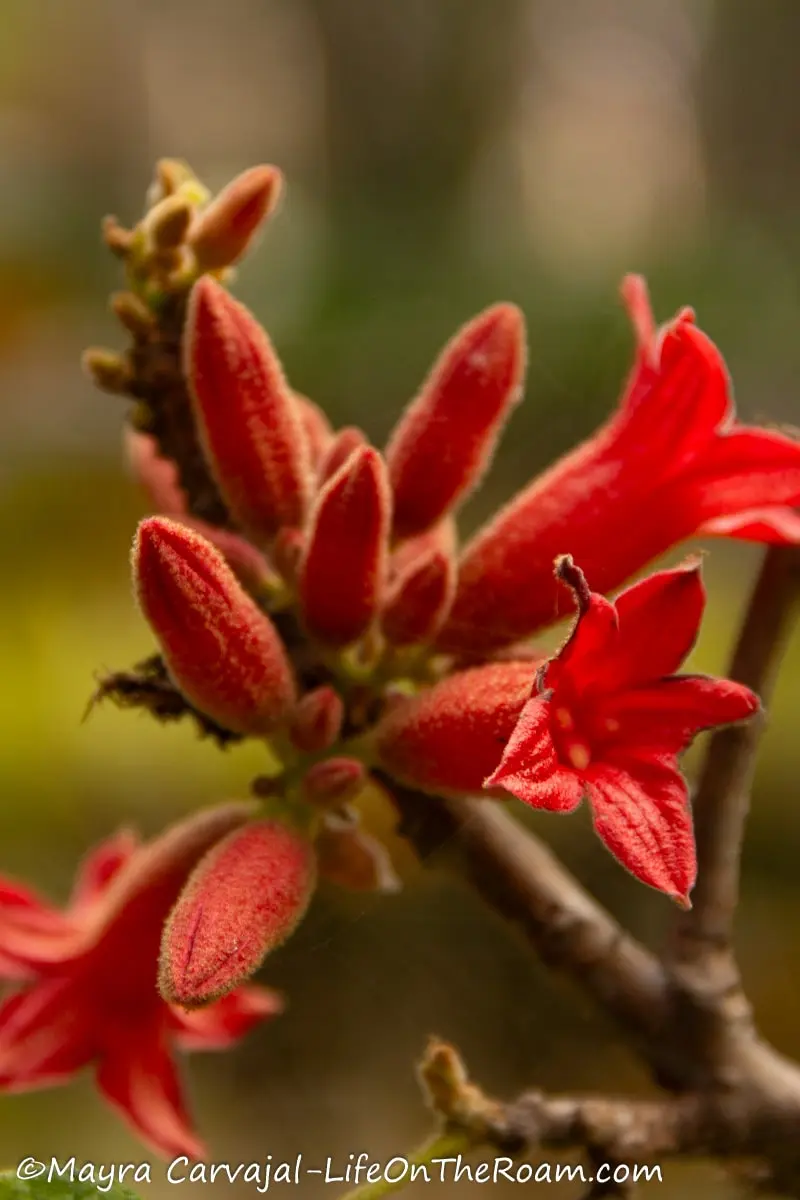
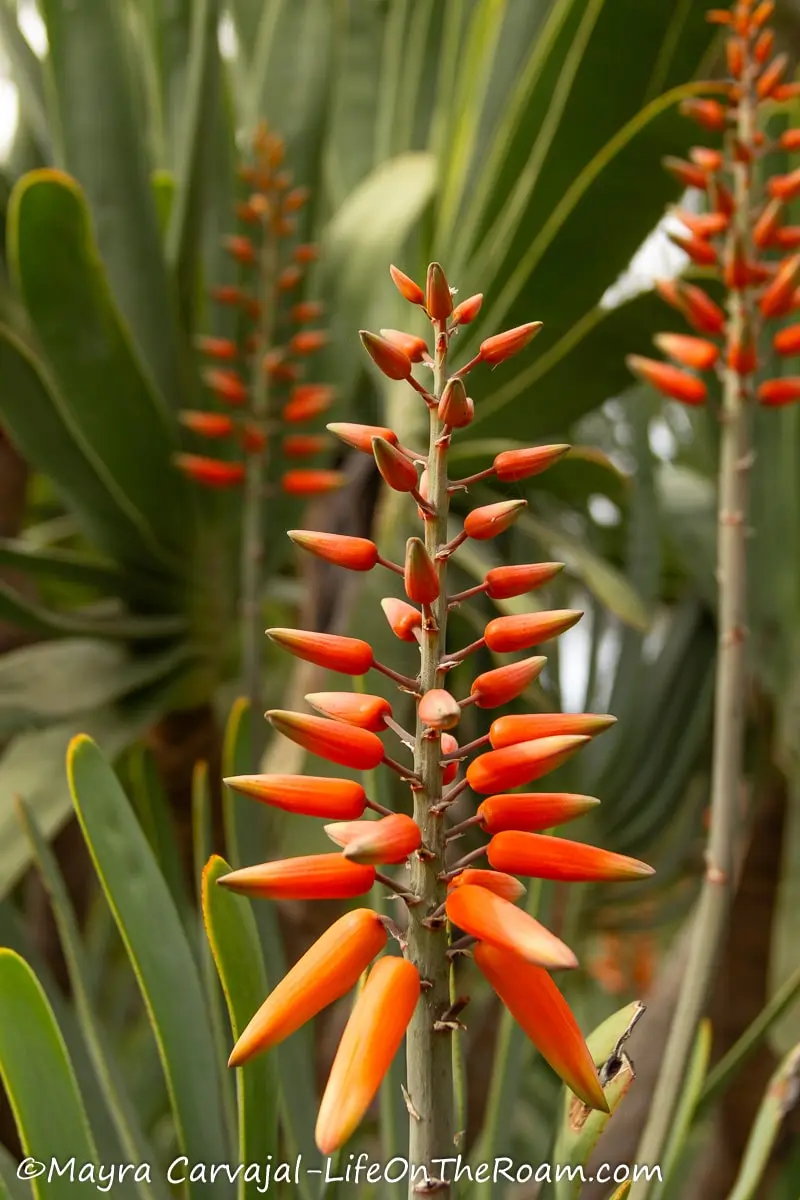
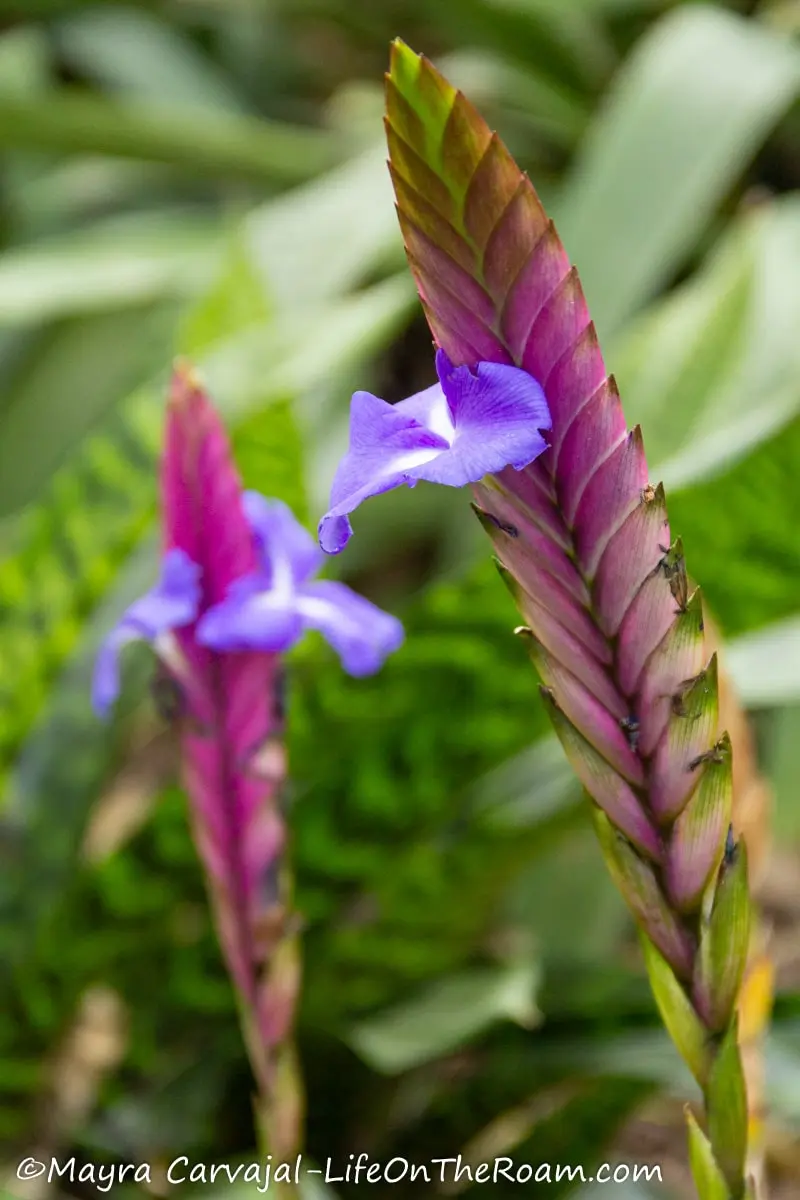
In addition to the relaxing ponds (and the beautiful plants, of course), my favourite sight in the garden were the giant Ficus Macrophylla trees (Lord Howe), native from Australia.
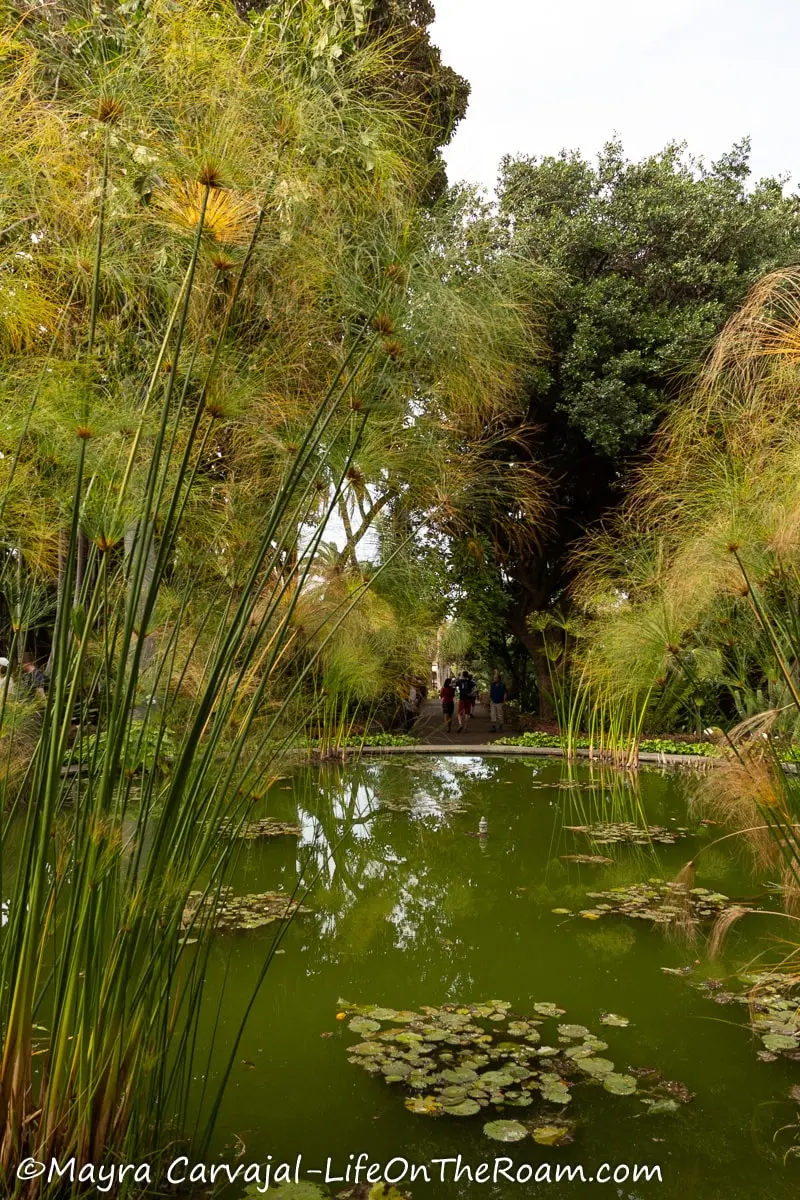
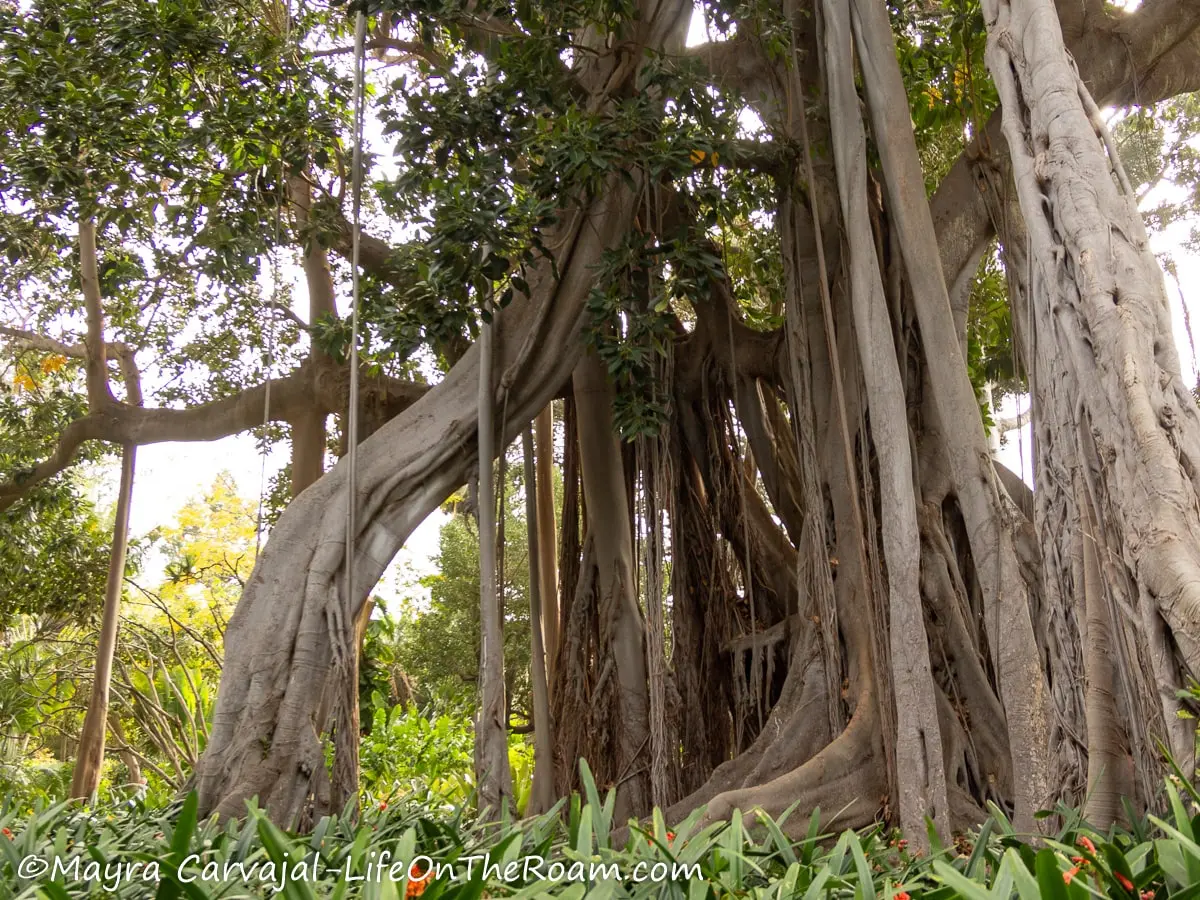
They look like walking aliens, don’t they?
They grow roots from the branches which stand like columns, allowing the tree to grow horizontally. Fascinating!
Calle Retama No. 2, Puerto de La Cruz. Open every day (except Christmas Day, New Year’s Day, and Good Friday): 9AM-6PM (last entry at 5:30PM); General admission: €3
See Marine Wildlife in Their Natural Environment
The Canary Islands are a wonderful place for whale watching. Even though it’s impossible to guarantee 100% that whales, dolphins, and turtles will show up when you’re around, there’s a great chance you’ll see at least one of them.
Check out these highly rated tours available:
If you don’t mind a big crowd and you want to see whales while enjoying a party-like vibe with alcoholic drinks, you may be interested in a catamaran trip with a swim stop.
Book this tour, with a rating of 4.6/5 based on more than 3,470 reviews
You prefer to stay out of a boat and see marine life from a kayak? This kayaking tour to spot turtles, including a snorkeling stop, may be your choice. This tour requires a moderate fit condition.
Book this tour, with a rating of 4.5/5 based on nearly 4,030 reviews
Explore Mount Teide National Park
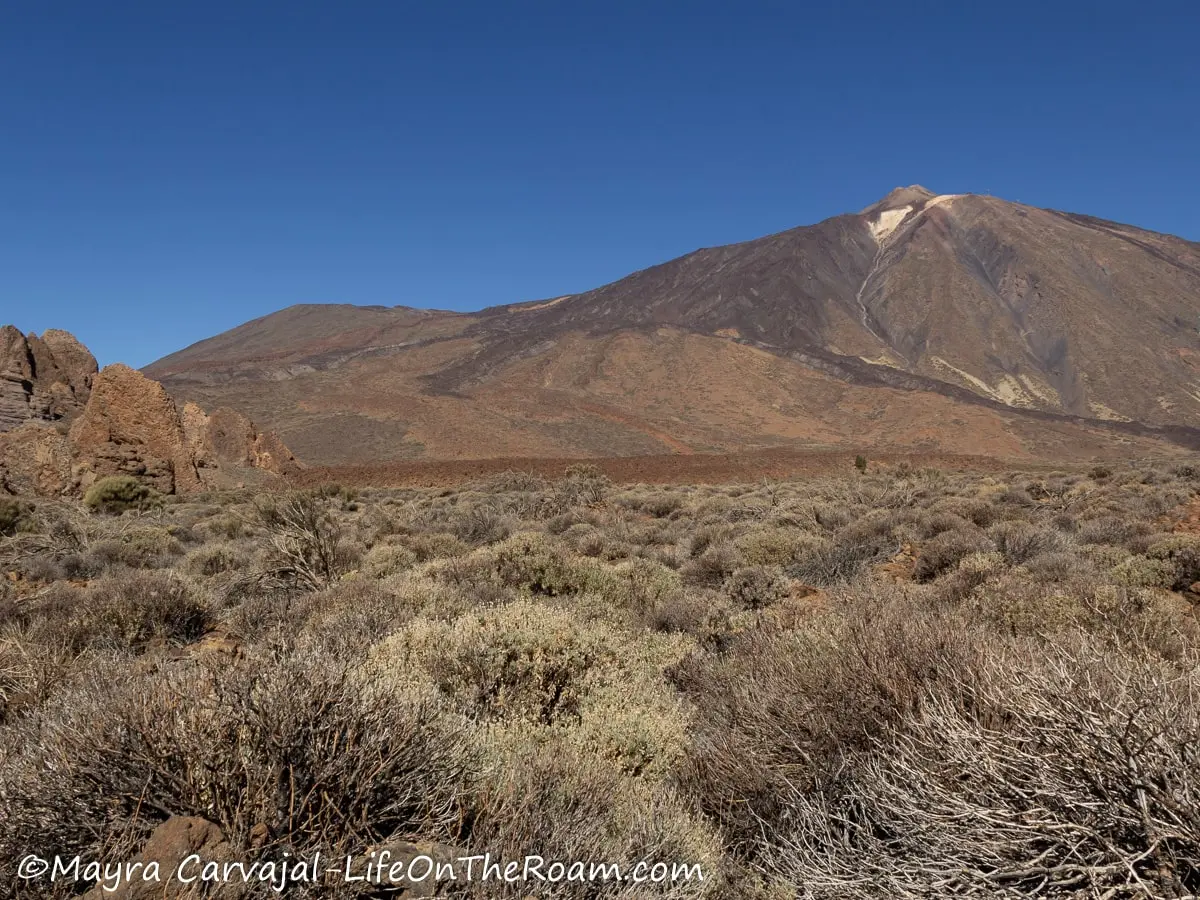
Over the centuries, volcanic activity formed the island of Tenerife and you can see up close the craters of such volcanoes when you visit the Mount Teide National Park, a UNESCO World Heritage Site.
It’s quite a unique and arid landscape, defined by curious rock formations, expansive rugged valleys, and the deflated-triangle shape of Mount Teide.
You can hike to the summit (or step on any of the 41 trails), take the cable car to enjoy a panoramic view, watch the stars or go on an adventure with a tour.
To find out more about how you can visit this out-of-this-world place check out my complete guide on how to visit Mount Teide.
Hike in the Anaga Rural Park
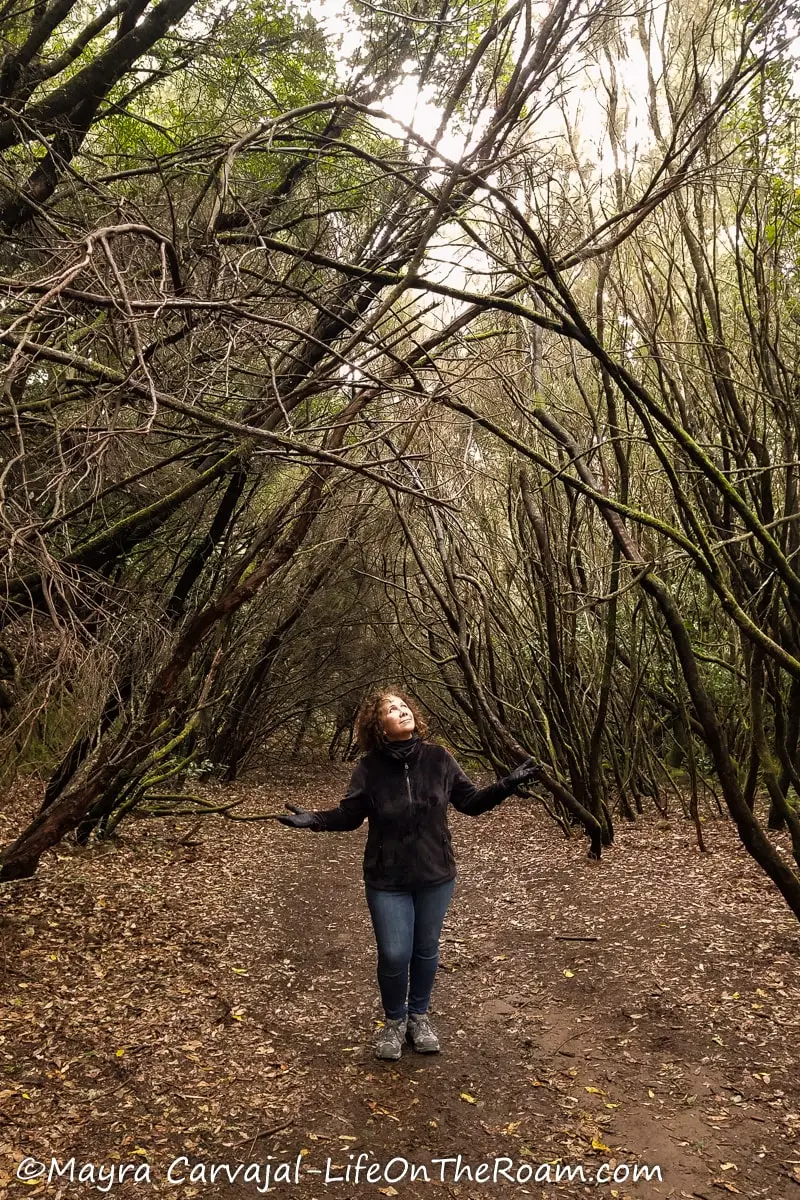
The Anaga Rural Park is located in a hilly landscape crowned by a dense forest at the top and covered with patches of cacti towards the bottom. I think it’s fantastic that you can experience such contrasting environments in one place, on the same day, which reminded me a little bit of the island of Saba in the Caribbean.
The Anaga Massif is a biosphere reserve that stretches across laurel forests and palm trees, a marine park visited by whales and dolphins, and small villages that seem to be preserved in a time capsule.
You can stop at scenic lookouts, such as the Jardina lookout (Mirador de Jardina) and explore any of the 20 hiking trails.
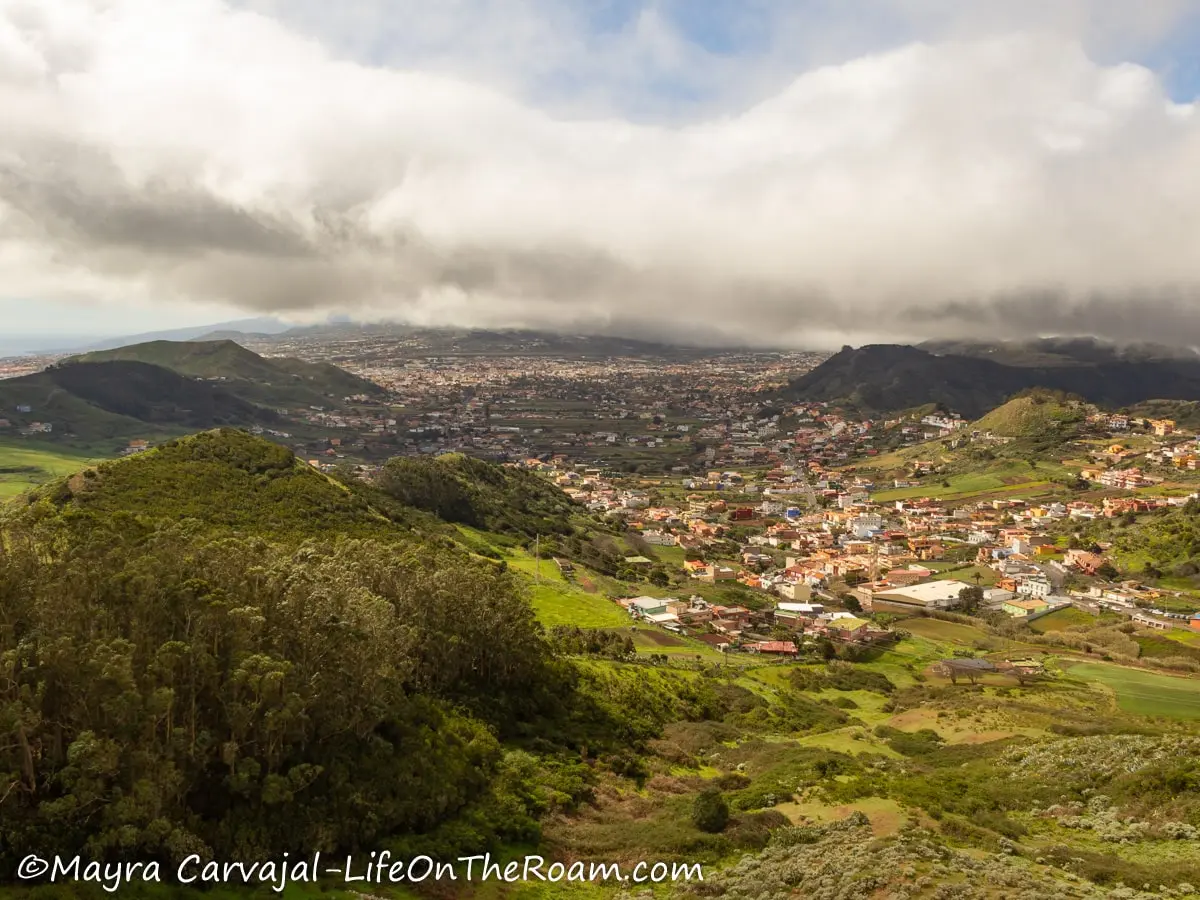
A beautiful trail to do if you don’t have much time is the Path of the Senses (Sendero de los Sentidos). The tunnel created by tree branches and the ever present mist makes it the type of trail that could be a perfect backdrop for a tale of mystery and magic.
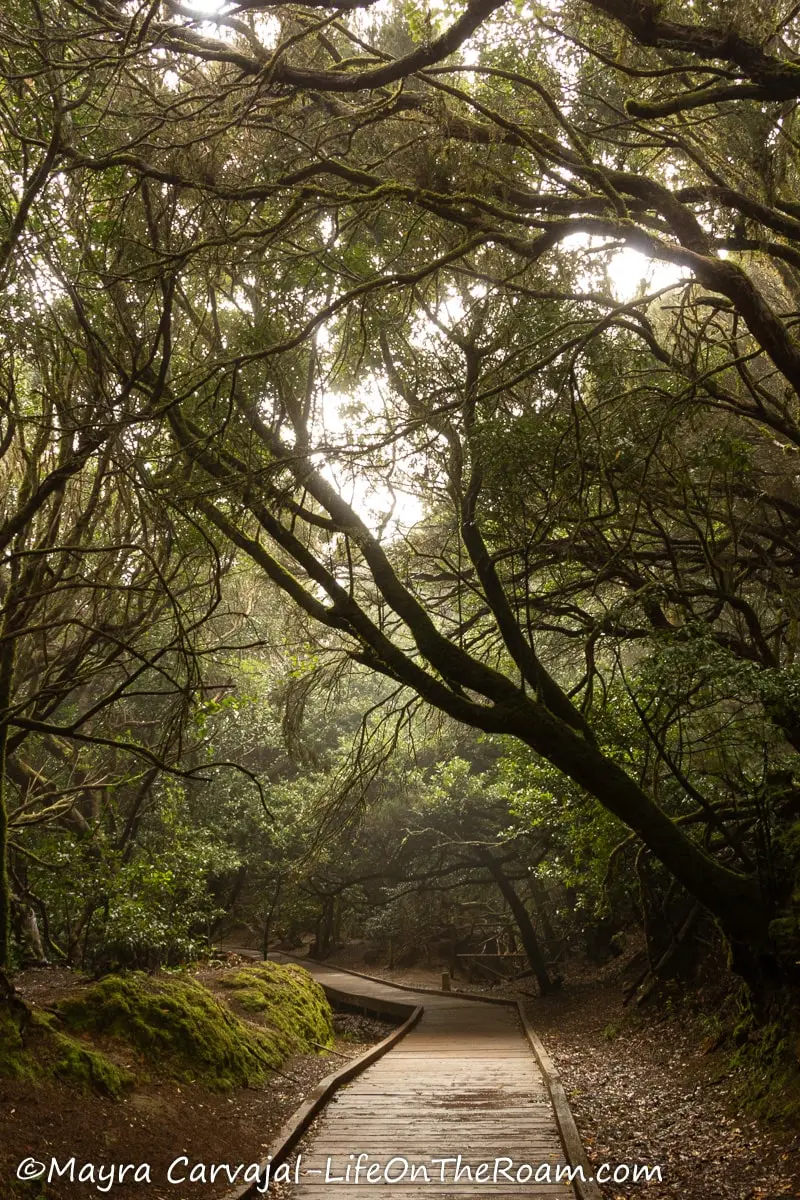
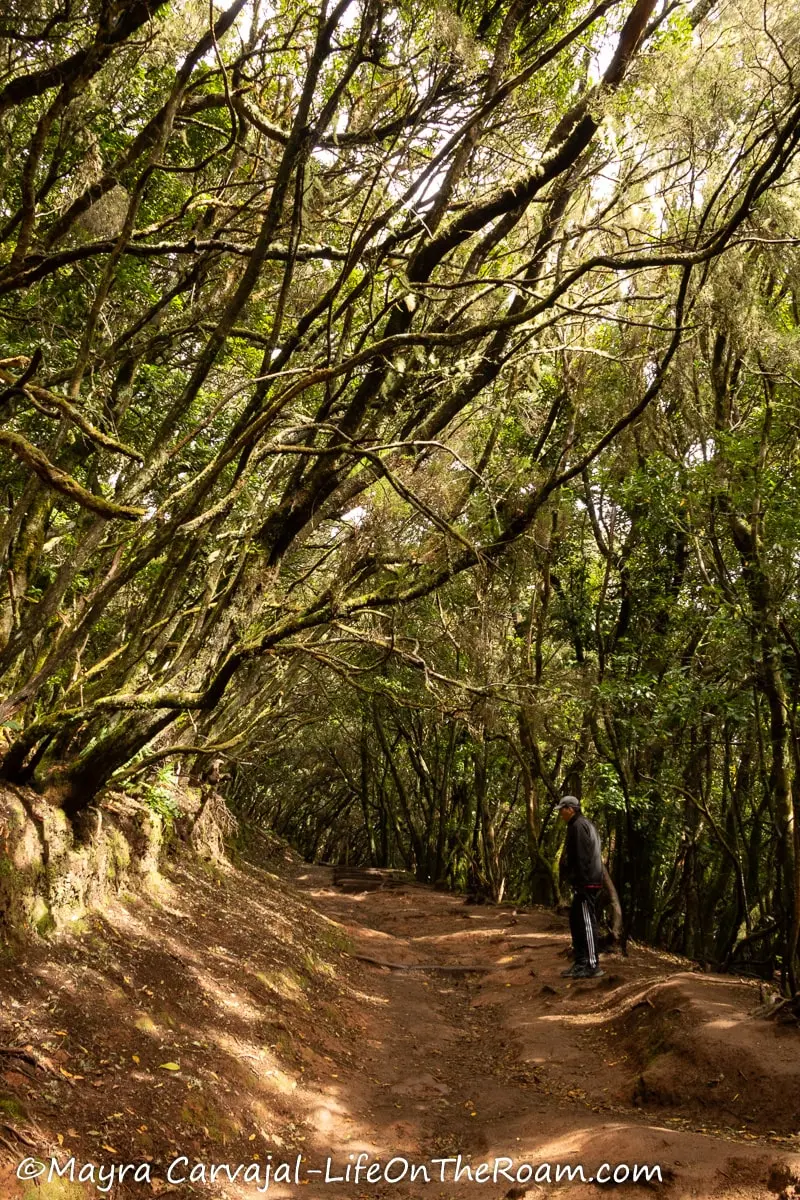
Drive the narrow, winding roads leading to the Roque de Taborno lookout to see traditional houses built up in the green hills and enjoy a wonderful view of the rugged mountains with the ocean in the background.
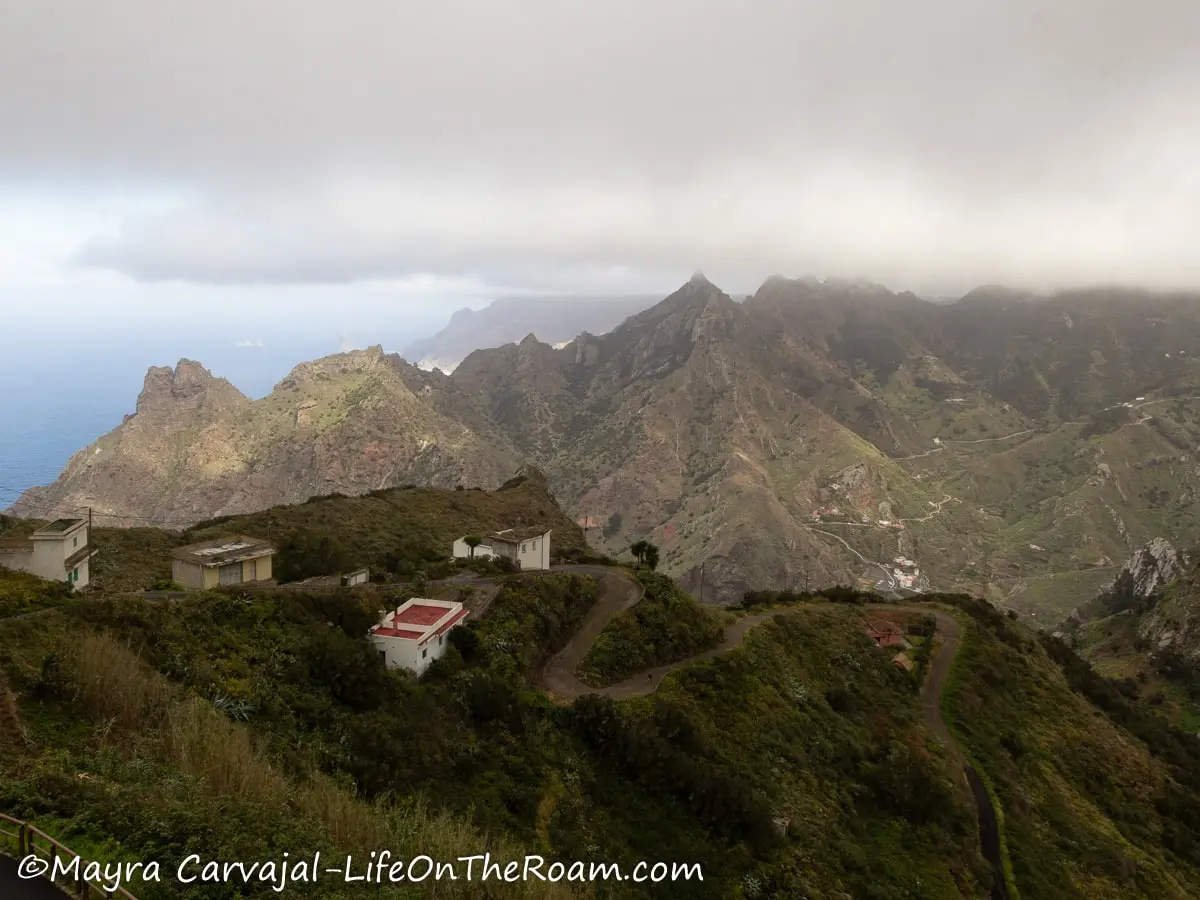
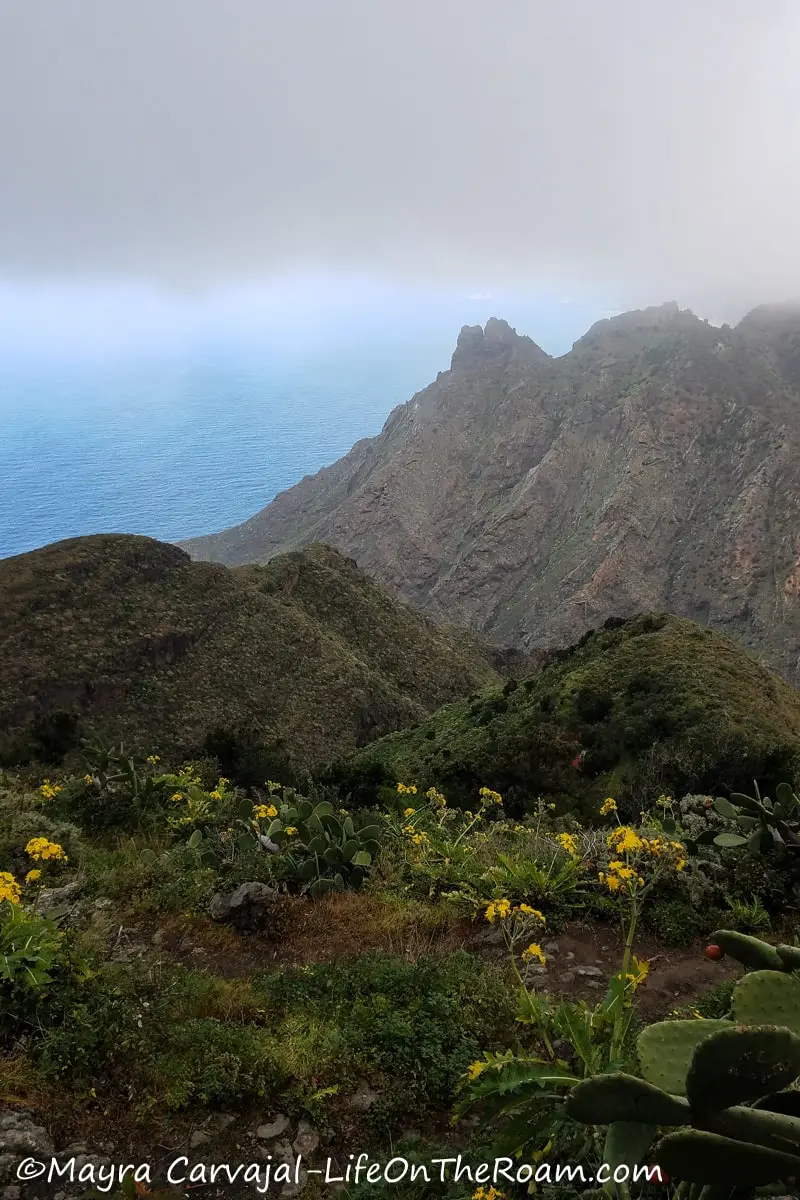
Next time I visit Tenerife I want to spend more time exploring Anaga, it was one of the highlights of my trip.
Buses to the Anaga Rural Park are few and far in between and don’t run on a reliable schedule. If you want to enjoy this heaven for hikers I recommend to rent a car or to join a hiking tour.
Take a 2-hour hiking tour in Anaga with a guide to learn about the flora, fauna, and culture of the area. Pick up from different parts of Tenerife is available for an extra fee.
Book this tour, with a 4.8/5 rating based on more than 110 reviews.
Visit San Cristobal de La Laguna
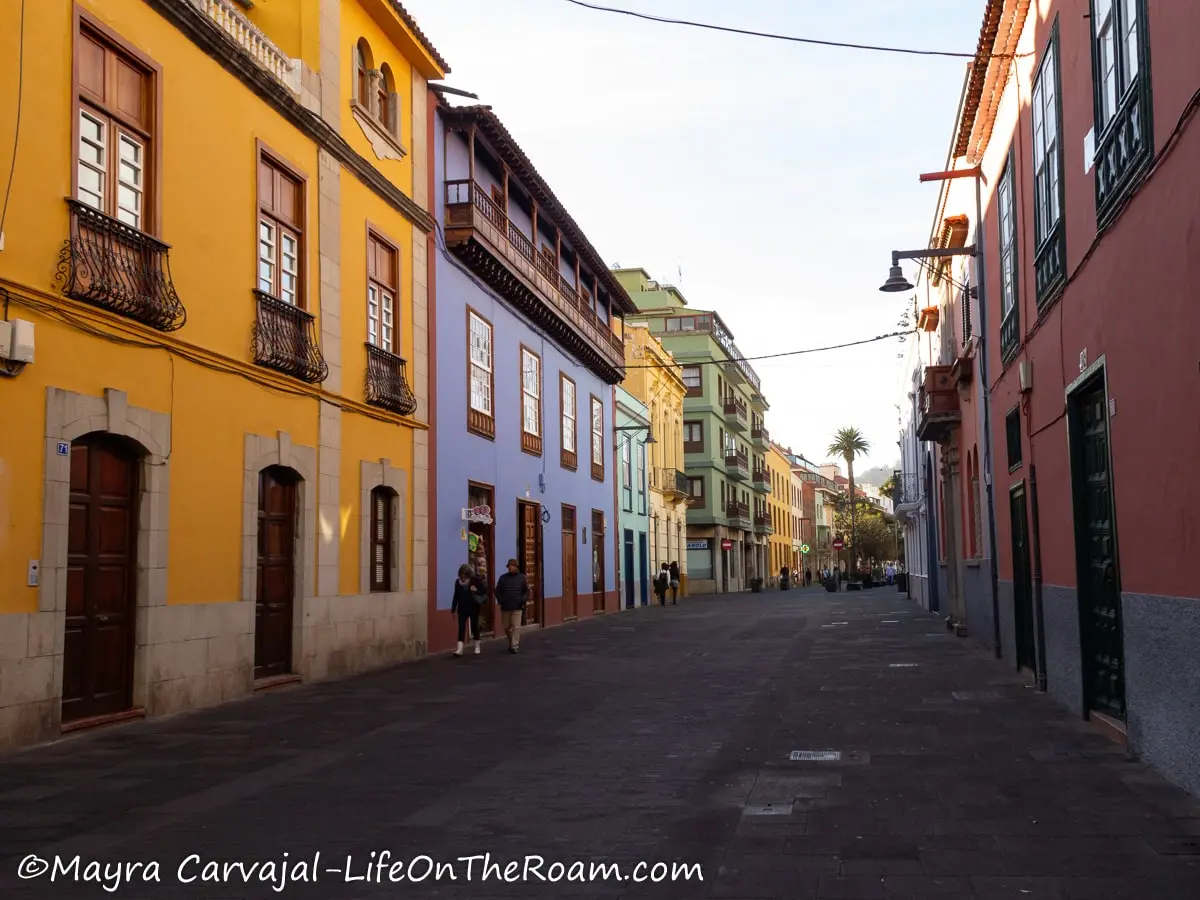
Welcome to the first planned city of the Canary Islands after the Spanish conquest and the former capital of the archipelago. The grid pattern traced in the 15th century, with wide streets, squares, and imposing civic, private, and religious buildings served as a model to build colonized cities in the Americas.
The well-preserved layout of its historic centre has earned San Cristobal de La Laguna a UNESCO World Heritage Site designation.
As you walk past houses painted in pastel colours with wood doors, windows, and balconies adorned with carvings, you’ll see some highlights such as the Plaza del Adelantado (the main square in town), the Church of Our Lady of La Concepcion, and the Cathedral of Our Lady of the Remedies.
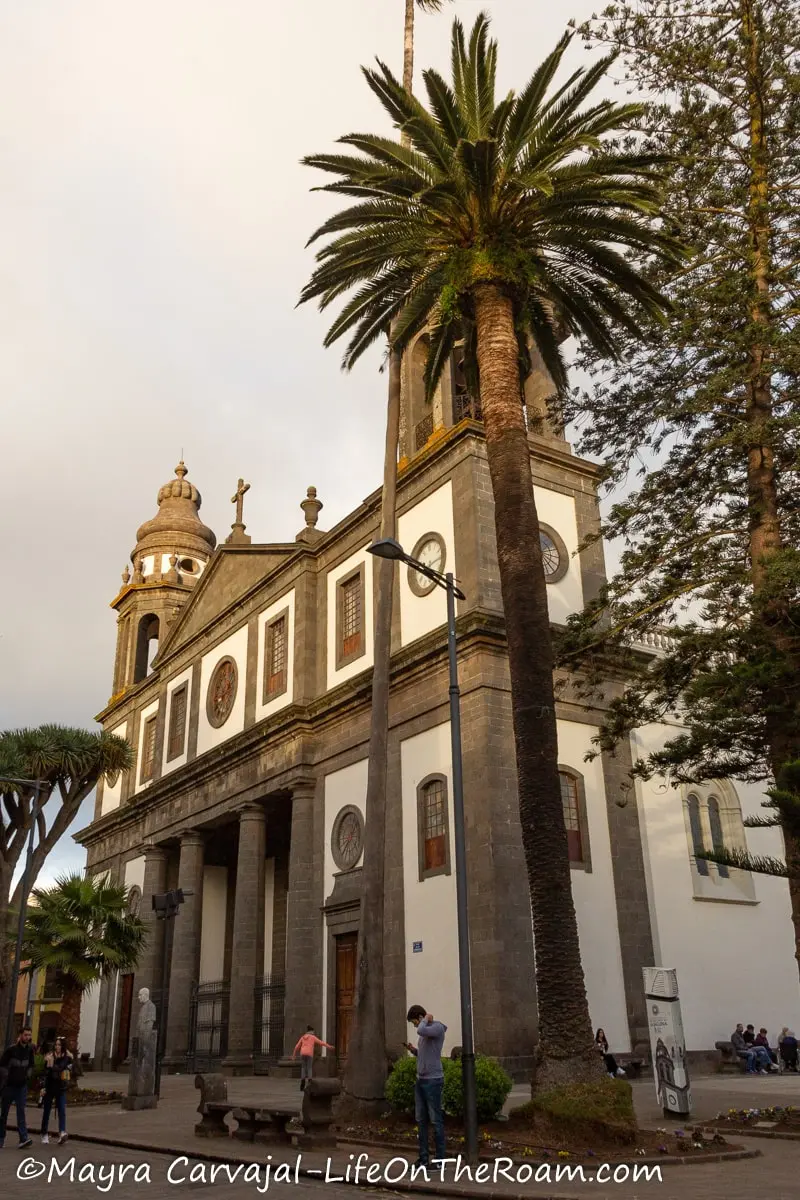
The latter is the first cathedral of Tenerife, originally built in the 16th century and entirely remodeled in the early 20th century, with a Neo-classical style façade and a neo-gothic style interior.
The main altar features a wooden tabernacle covered in fine silverwork from the late 19th century and a pulpit in Carrara marble that has been here since the 18th century.

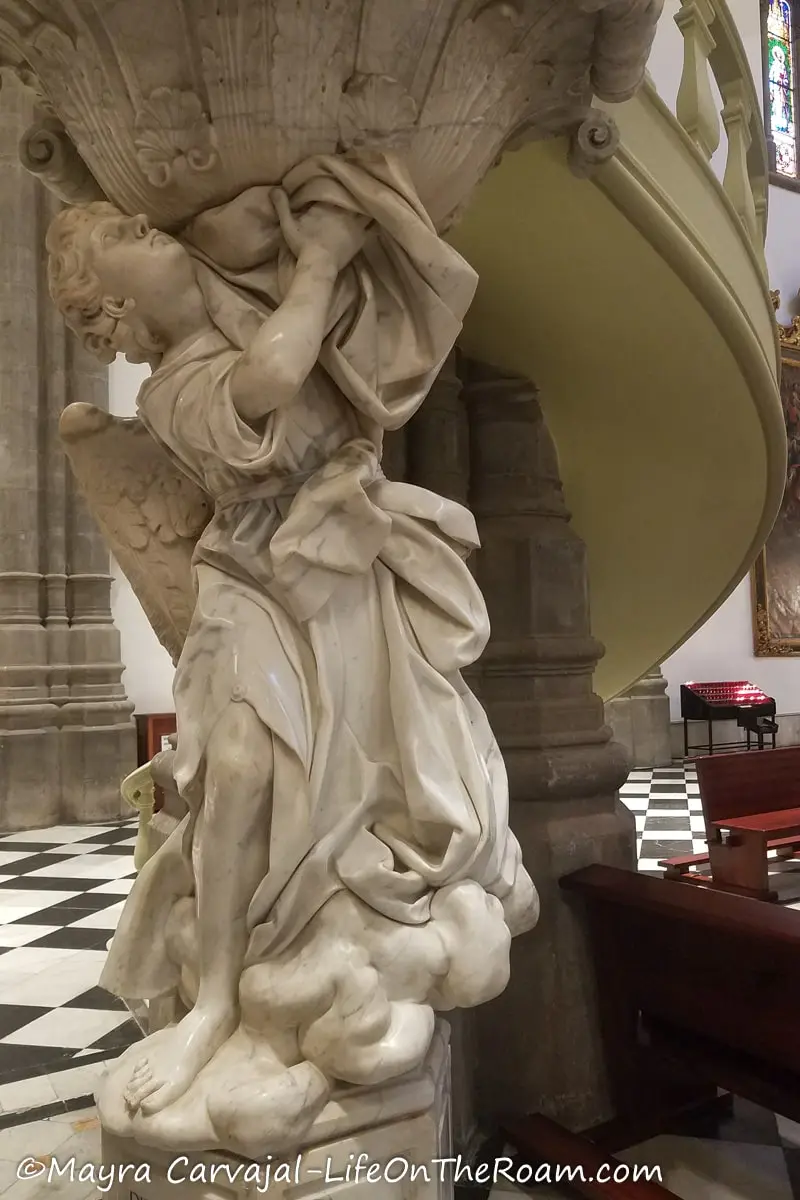
The main chapel of the cathedral, in Baroque style, is the most impressive with an altarpiece of the Virgin of the Remedies in wood and painted in gold dated between the 17th and 18th century.
Of all the other pretty chapels I loved the one dedicated to the Virgin of El Carmen, in Neo Gothic style, made in wood and covered in gold, with statues from the 17th and the 18th century.
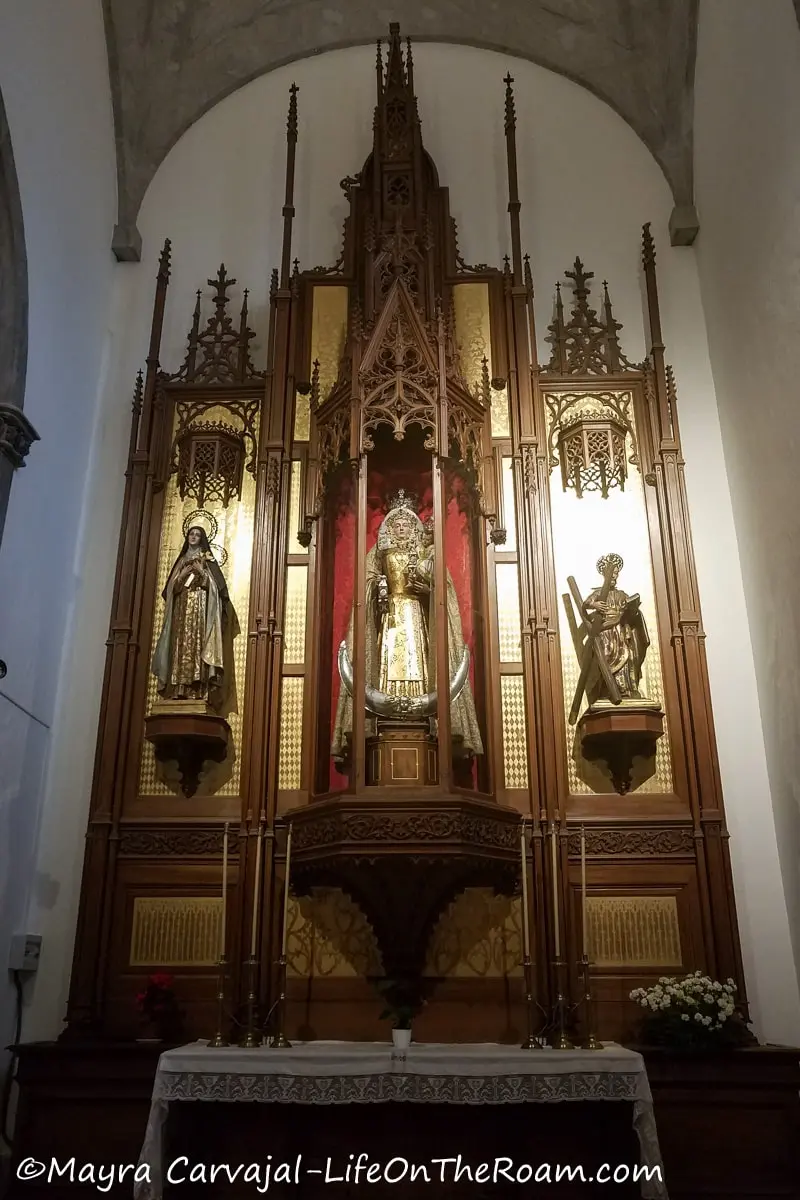
The Church of La Concepcion, with a Baroque Churrigueresque style, was reconstructed in the 17th century and the tower was added in the 18th century.
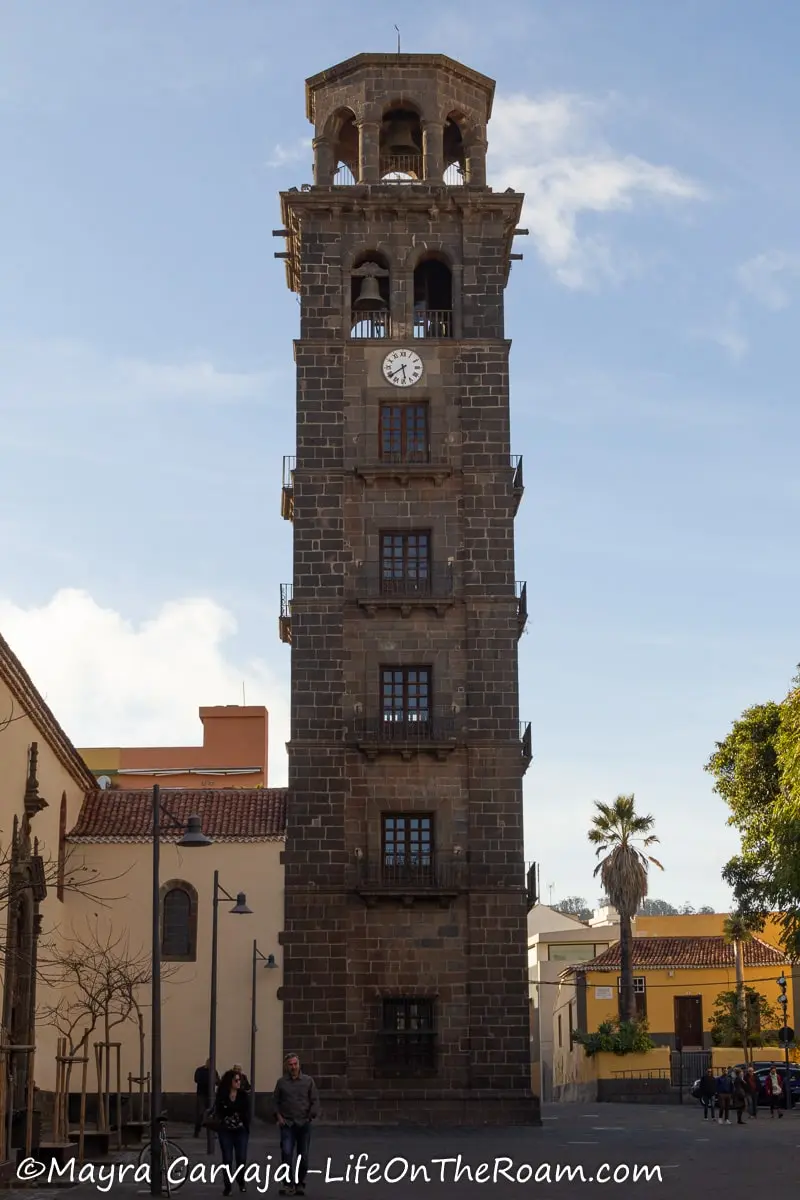
You can go up the tower to enjoy a panoramic view of the city.
To take a break under the shade of many Canary palms head to the Parque de la Constitucion.
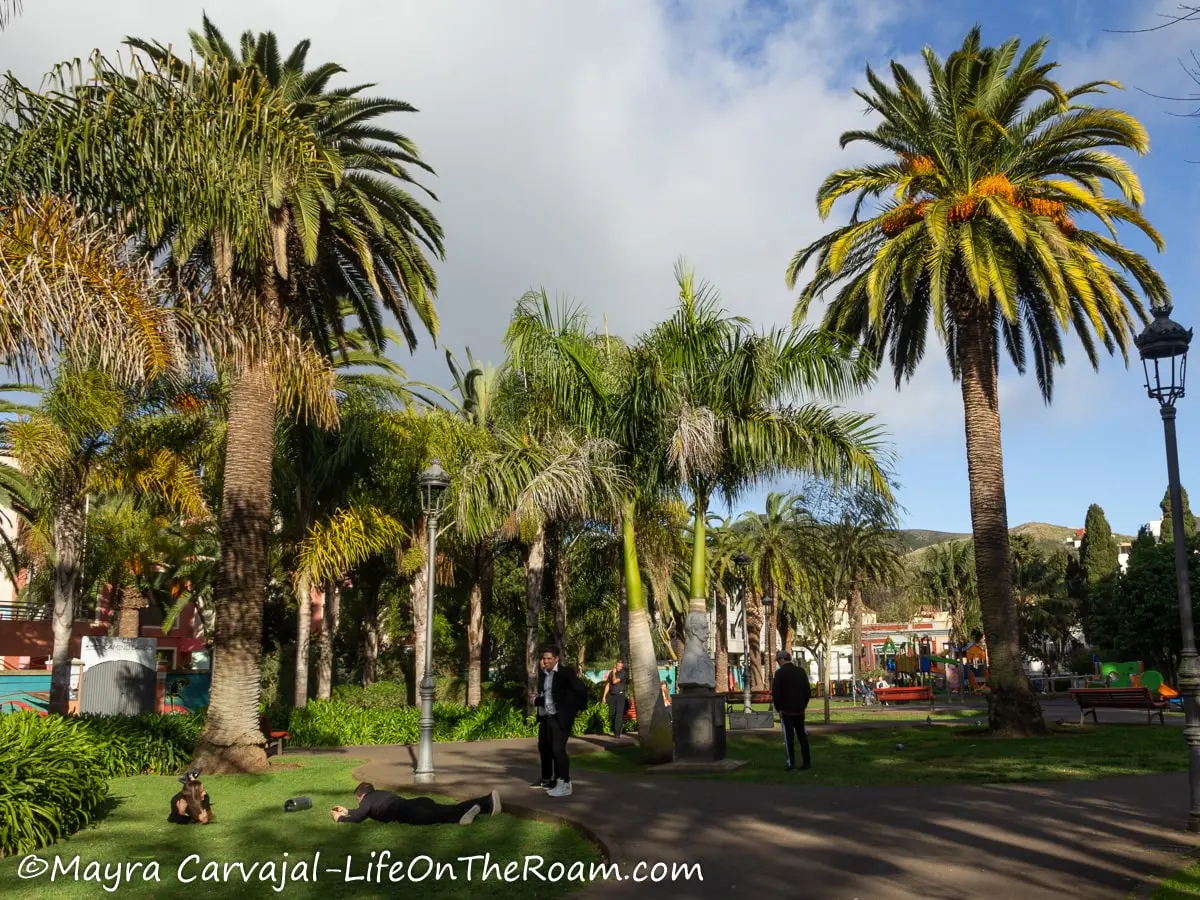
Relax at Playa de la Arena
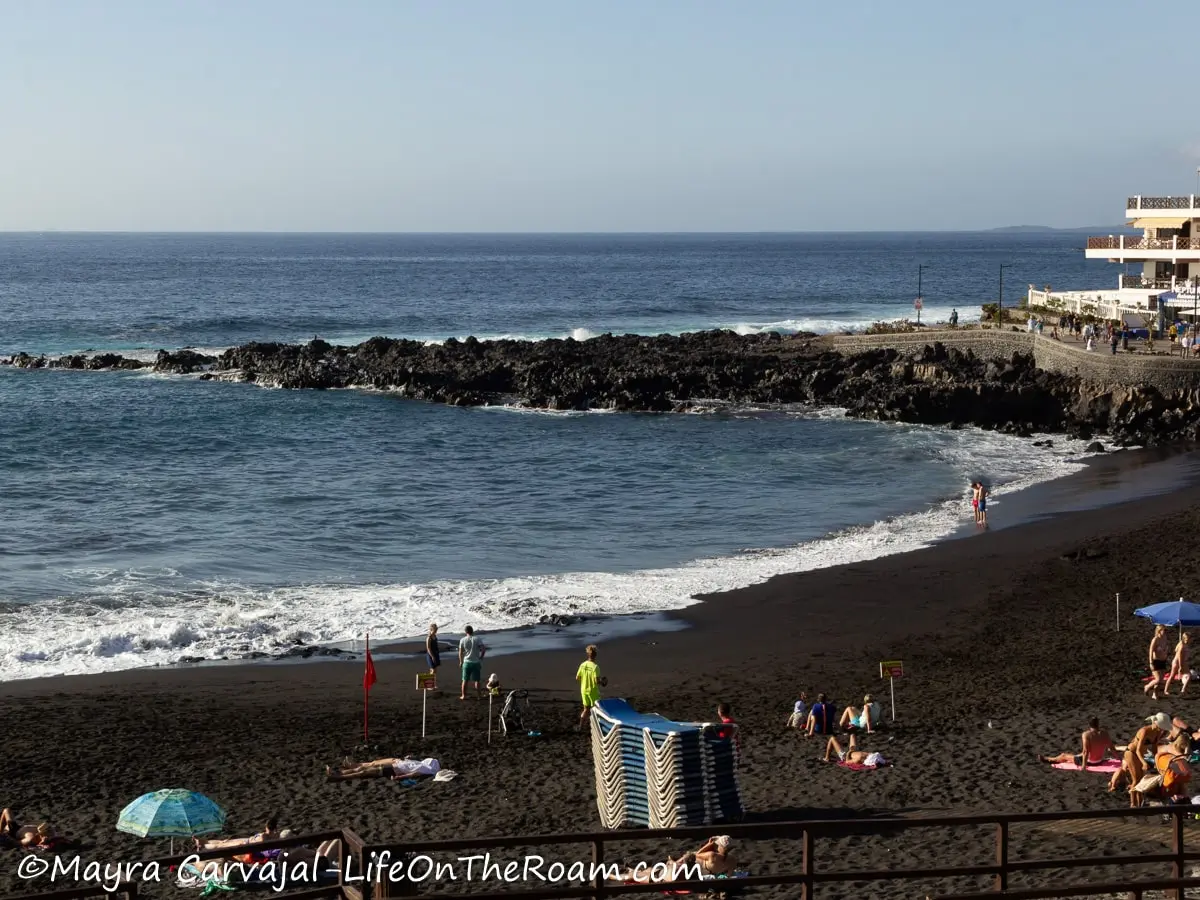
This Blue Flag beach with soft black sand is an alternative to the more crowded and popular beaches around the Costa Adeje area.
There are beach lounge chairs available for rent, several reasonably priced restaurants nearby, and outdoor showers and bathrooms.
The sea on this small beach is on the rough side with strong currents (there was a red flag when I visited), so it’s not the best for kids.
While you’re here, walk along the shore towards the south side of the bay to see some interesting rock formations. The most famous is Charco La Vaca (also called Cueva de La Vaca), a natural pool where you’re not allowed to swim, but where you can enjoy a scenic view of Los Gigantes.
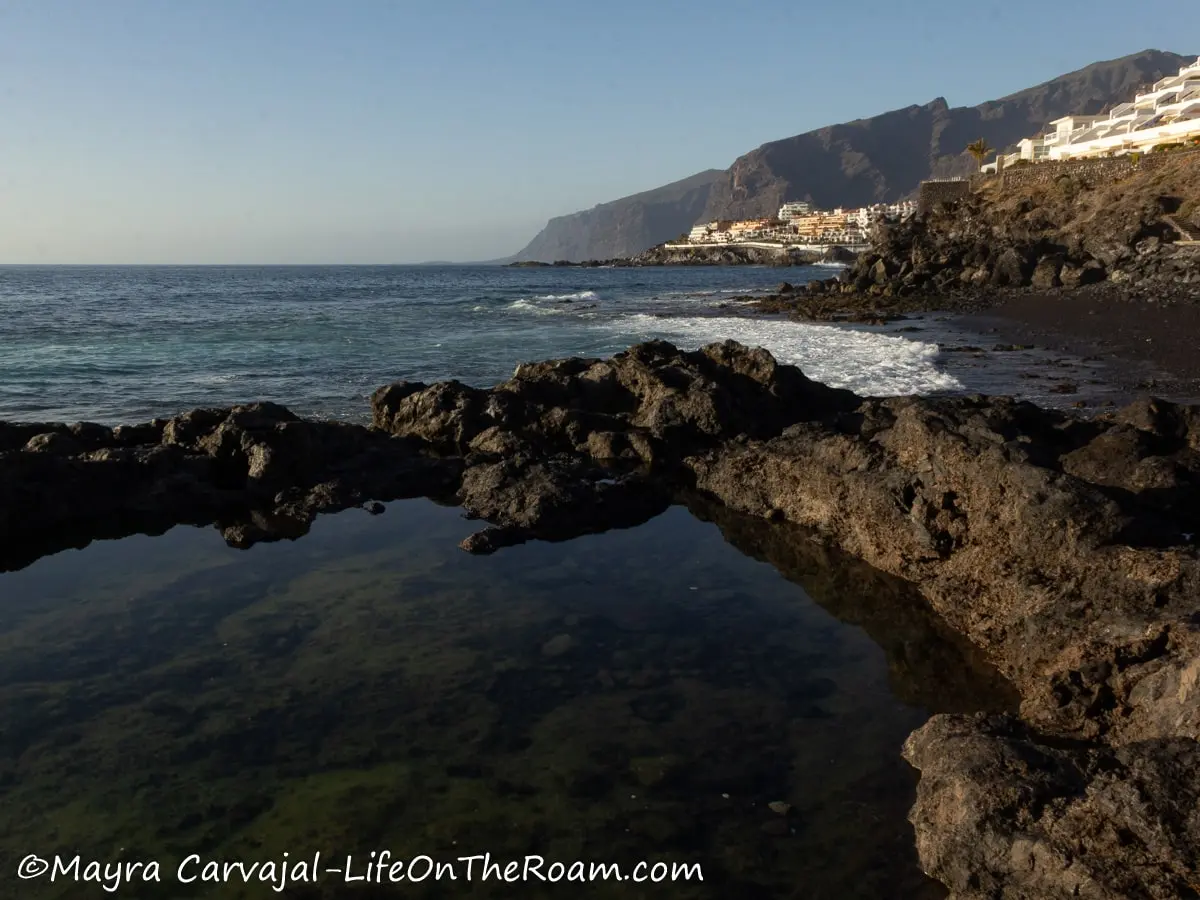
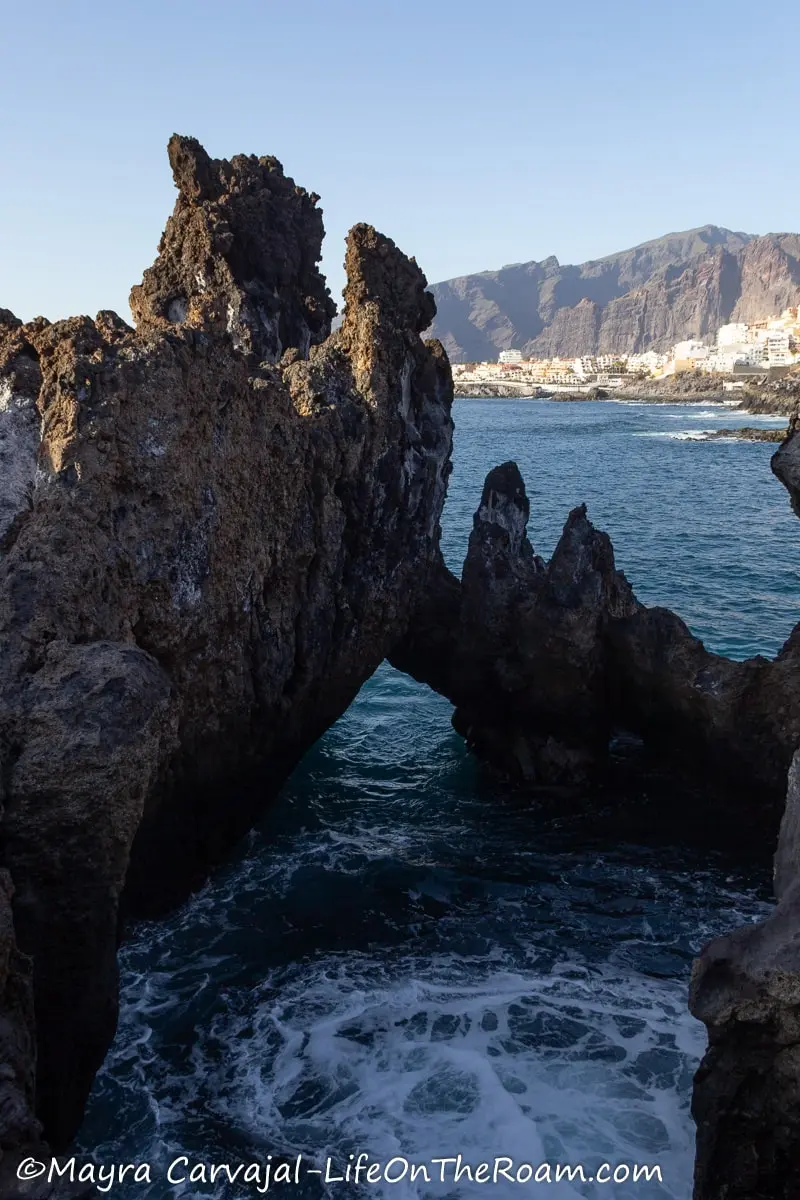
Admire the Cliffs at Los Gigantes
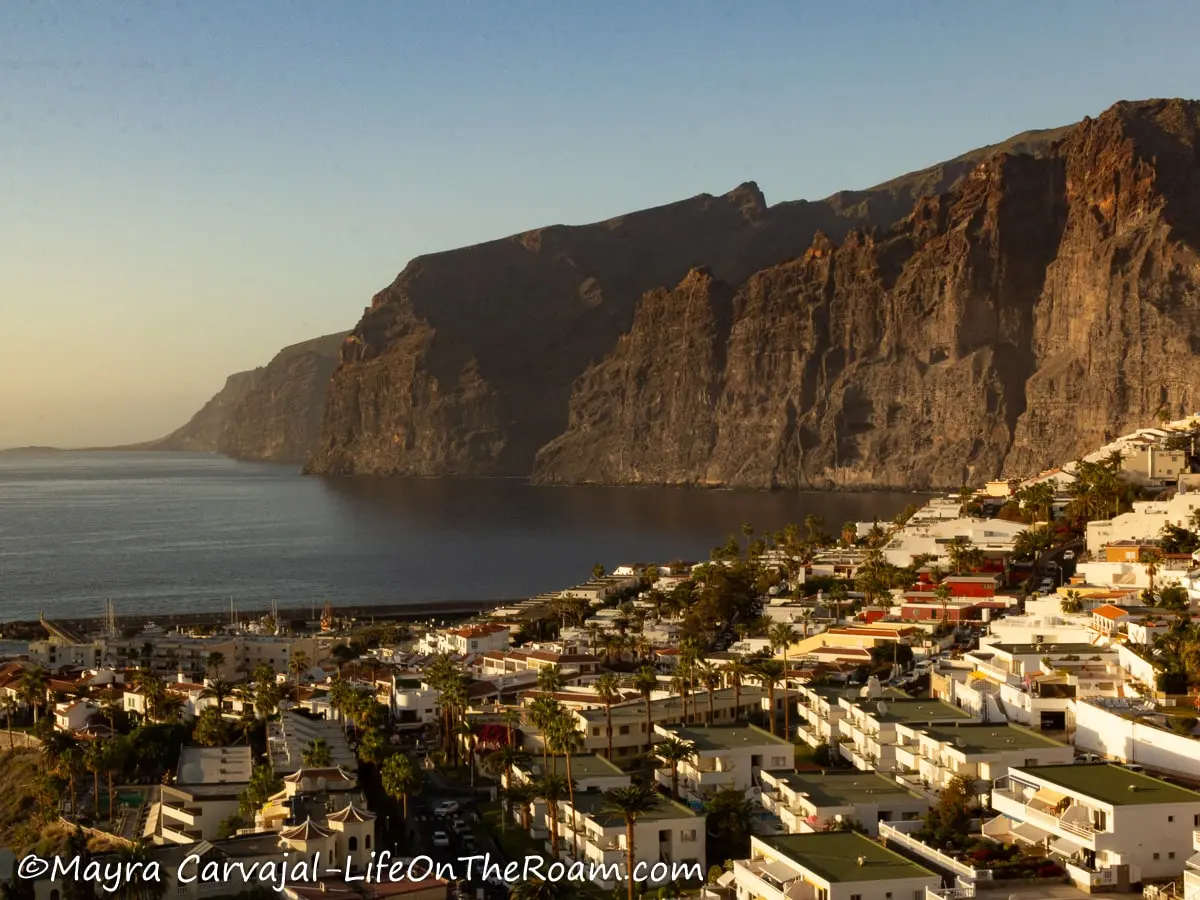
This is it, this is where the world ends! exclaimed the indigenous peoples of Tenerife when they saw Los Gigantes (The Giants). Standing tall and majestic, these monumental cliffs are of volcanic origin, reaching a height of up to 800 metres (2,624 feet). They also give the name to the surrounding area, located within minutes (by car) from Playa de la Arena.
There are several lookouts along road TF-436 from where you catch amazing views and access hiking trails that take you near the edge of the cliffs.
A good place to catch the sunset with Los Gigantes on your right is the natural pools.
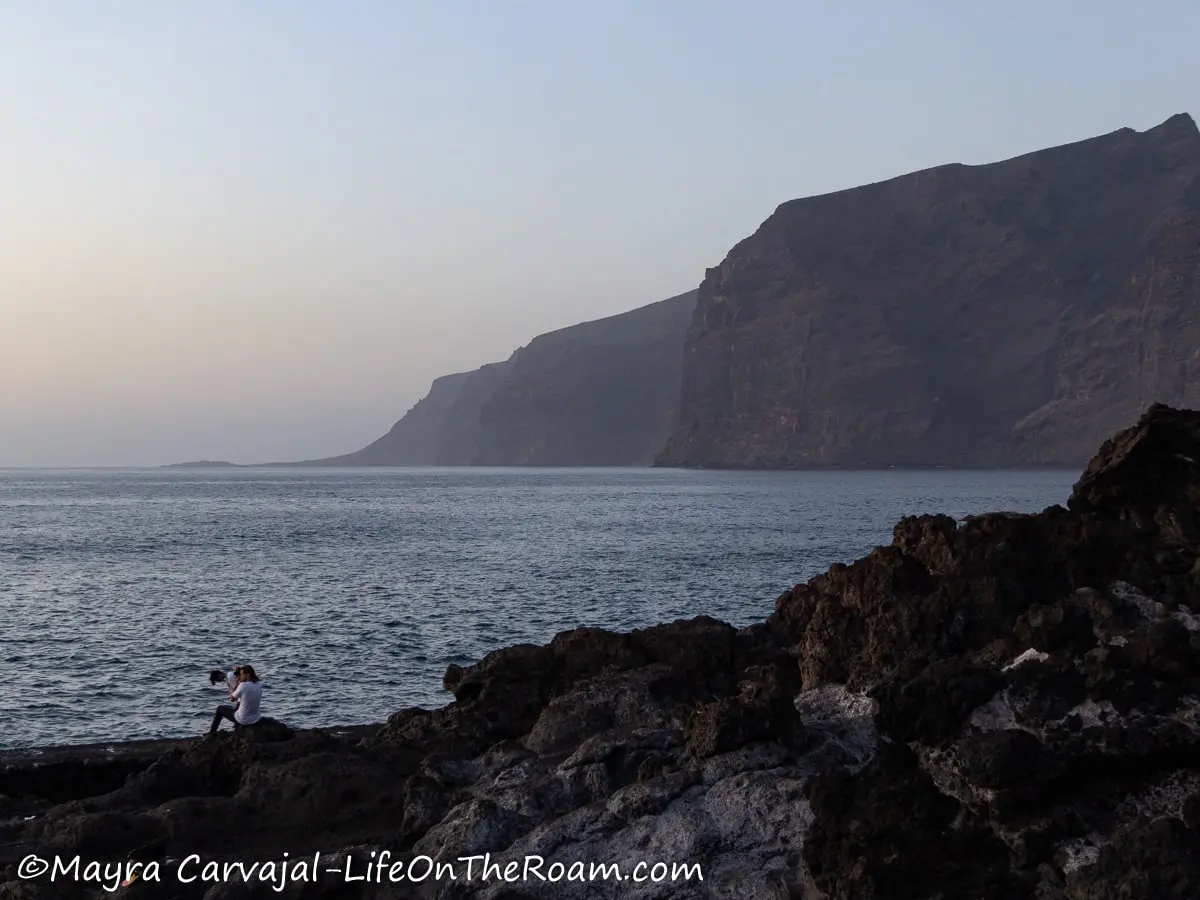
Note: this site may be closed if the sea is rough.
Follow the directions on your phone and the street signs to get there and, after experiencing the miracle of finding a spot in the small parking lot, take the stairs down to a pool formed by rocks and protected by a low concrete wall.
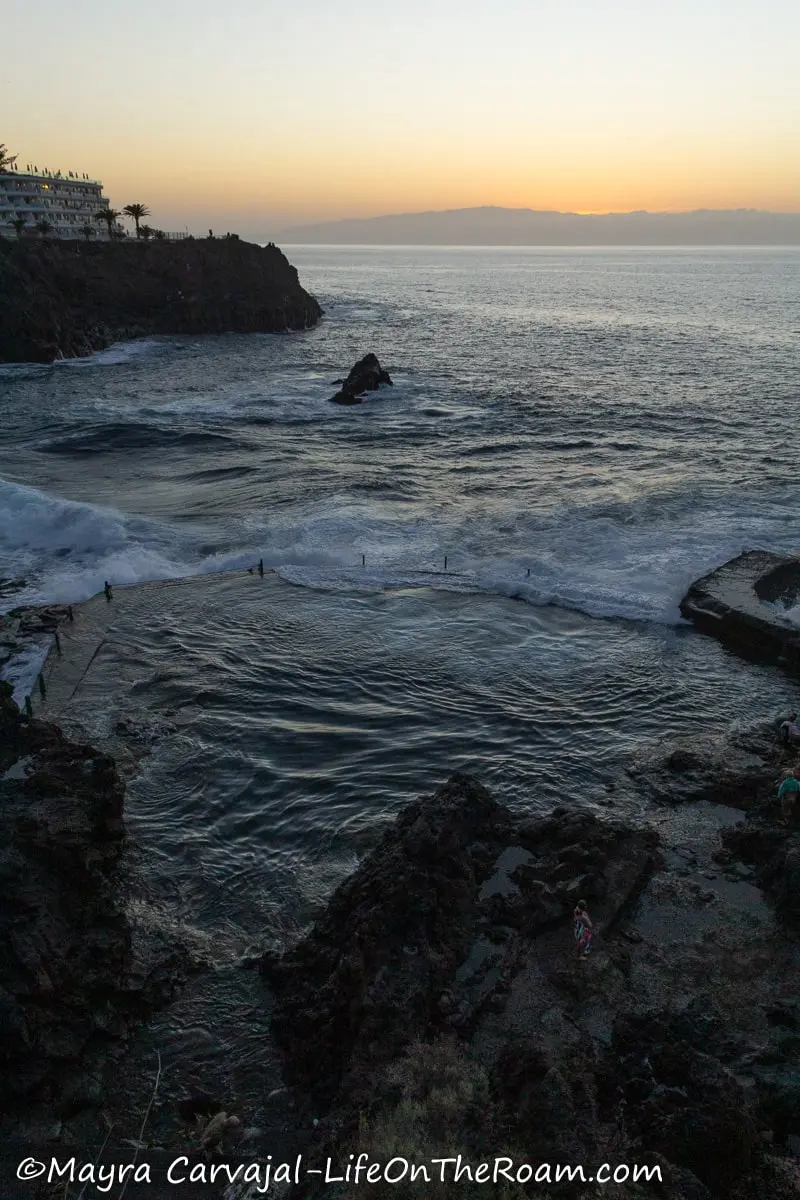
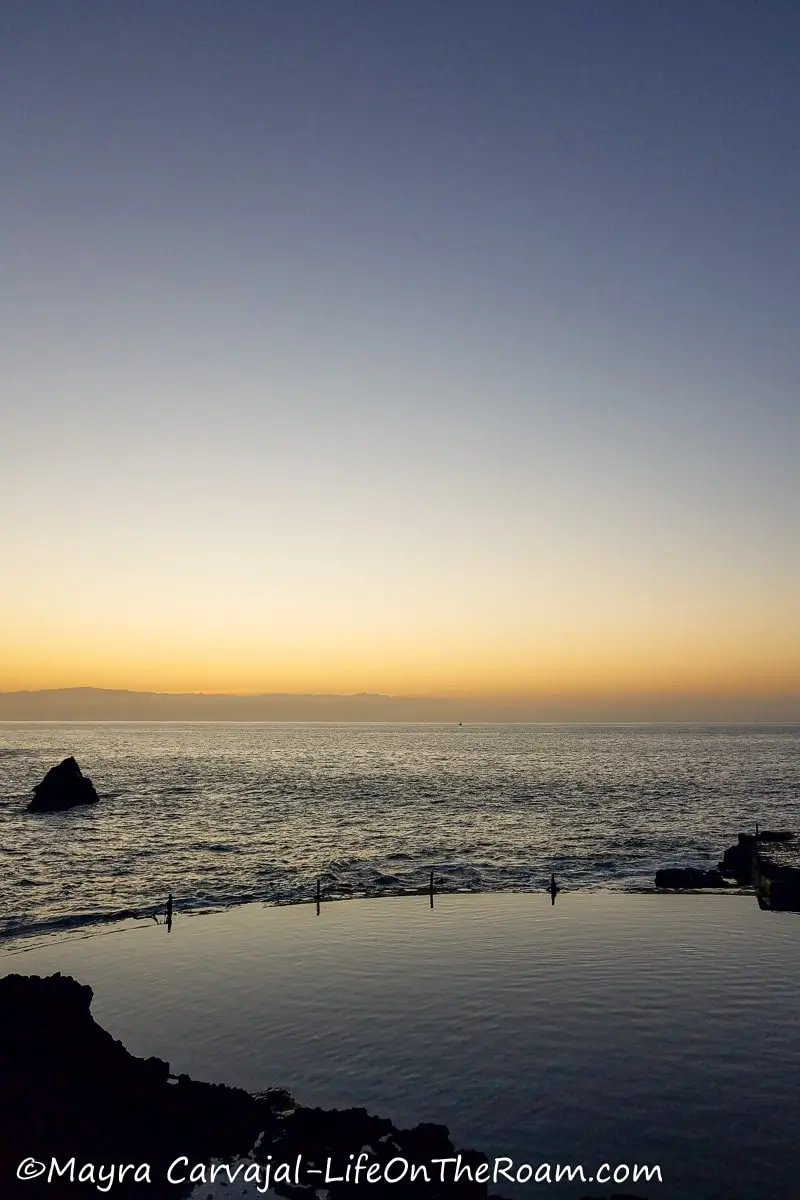
This wall may give you a false sense of security because it doesn’t prevent you from being dragged into the sea when a big wave hits.
You may encounter people swimming in the pools, but be aware that you can read in local newspapers about tourists being swept away by unexpected waves, even when the sea looks calm.
Being dragged to the sea is possibly the least of your worries. The worst part is that you’re repeatedly thrown back and forth between jagged volcanic rocks that cut like a knife. Some people have sustained serious head injuries.
For a safer visit, don’t get in the pools and don’t stand close to the rocks.
You can also enjoy Los Gigantes from the sea. When you join a boat tour you can see the towering cliffs up close, visit pristine bays accessible by boat, and spot marine wildlife.
Take this 2-hour cruise from Los Gigantes port to get close to the scenic cliffs, swim in secluded bays, and for a chance to see dolphins and turtles.
Book this tour, with a 4.7/5 rating based on more than 540 reviews
Go to Santa Cruz de Tenerife
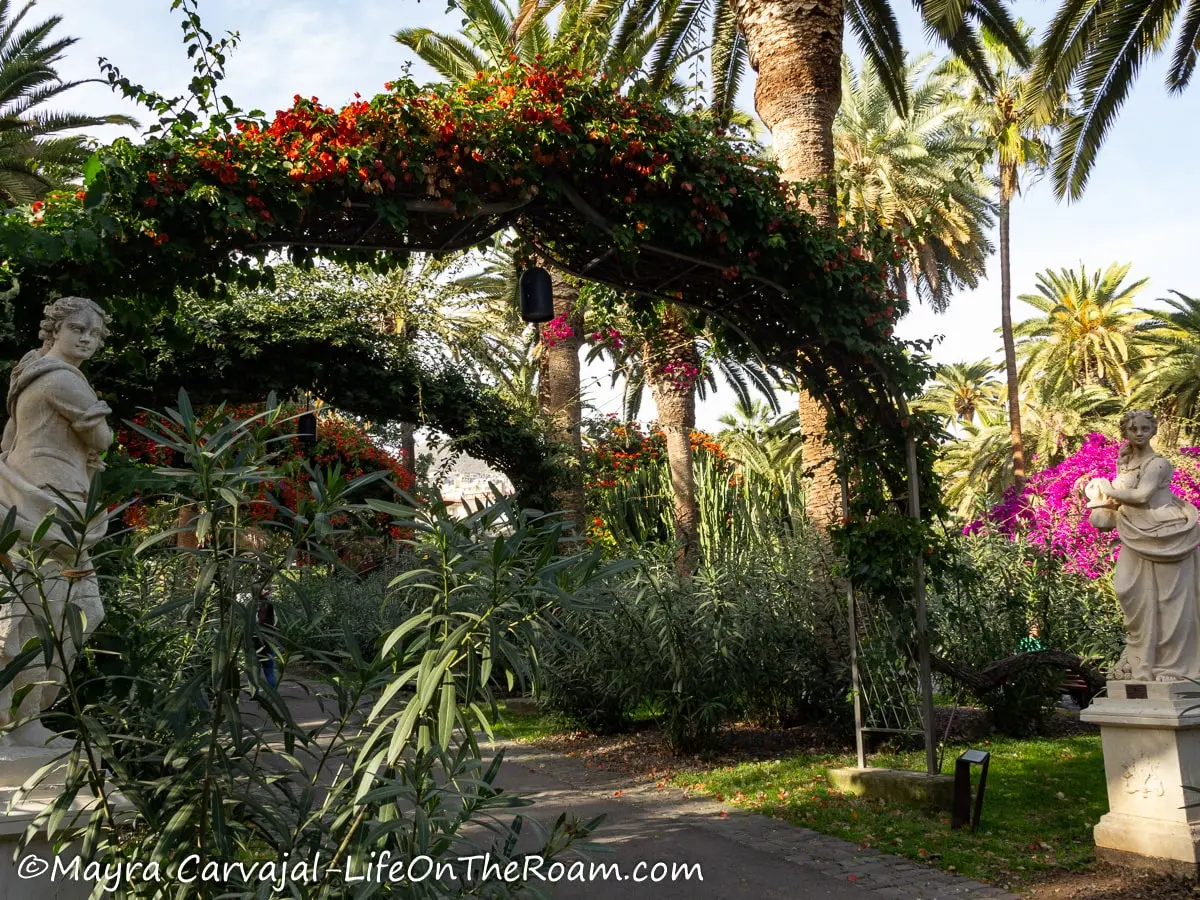
Like a New York City bodega, Santa Cruz de Tenerife has a little bit of everything.
You’re into performing arts? The program at the Tenerife Auditorium, with dance, concerts, opera, and more, will have you covered.
Art and architecture is your thing? You’ll find a good sample of well-preserved buildings from the 19th and early 20th century as well as museums and lovely squares.
You’re more the outdoorsy type? No problem. Check out the collection of palm trees (and more) at the Santa Cruz Palmetum Gardens, where you can also enjoy scenic views and birdwatching.
Or relax at the Parque Garcia Sanabria as you walk between its beautiful gardens and sculptures.
To learn more about the capital of Tenerife, check out my post about what to do in Santa Cruz de Tenerife in 1 day.
Take a Day Trip to La Gomera
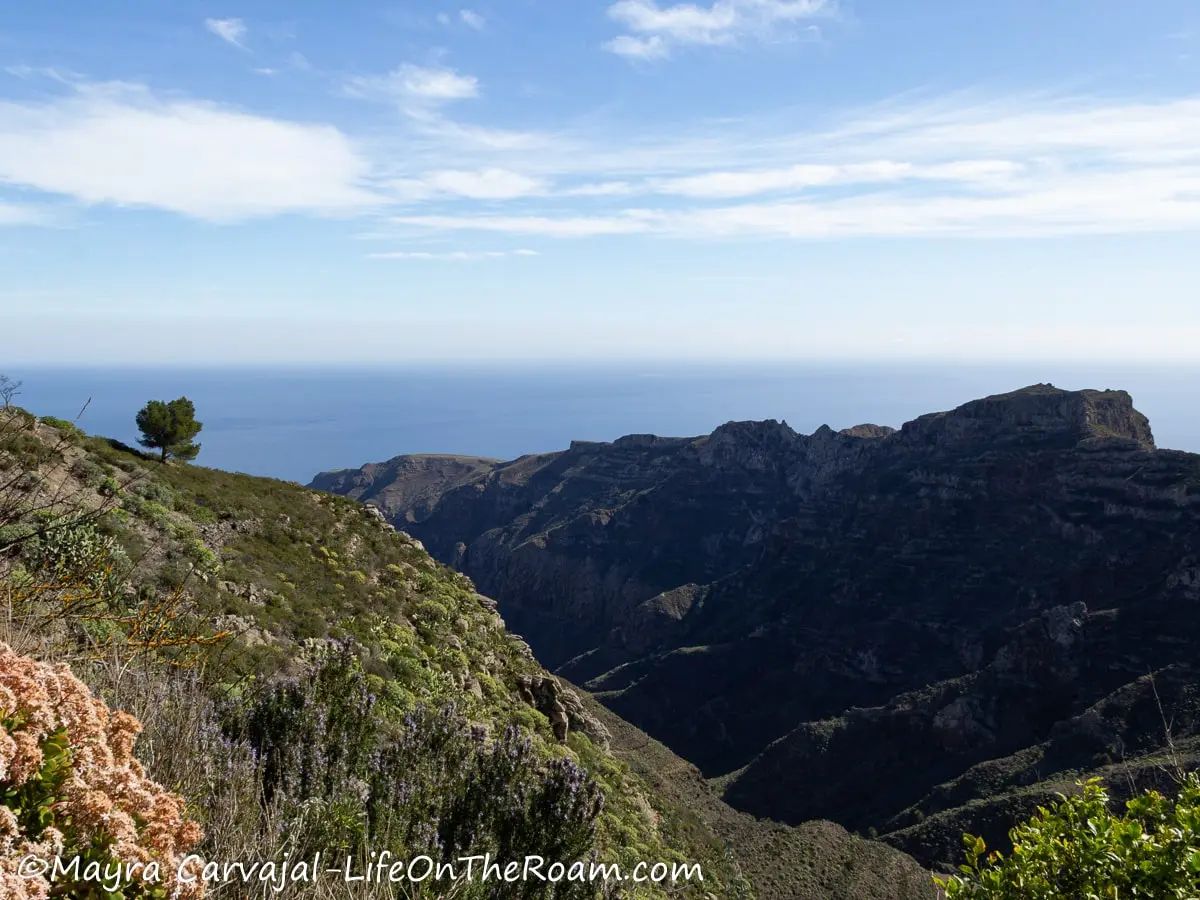
Hop on a ferry and in one hour or less you’ll be in La Gomera, also part of the Canary Islands and a place where the mountainous scenery will wow you, and hiking trails will take you through stunning forests and lookouts.
La Gomera offers an escape from the crowds of Tenerife and a wonderland for hikers and nature lovers.
Try the Local Flavours of the Canary Islands

My favourite specialty is almogrote, which is originally from La Gomera, but can be found all over Tenerife.
Almogrote a spread made of cured goat cheese, olive oil, garlic, and pepper. Have it with some bread and a glass of local white wine. If you love cheese as much as I do you’ll be in heaven because the flavour is stronger than an angry alligator.
You’ll also find red and green mojo (pronounced MOH-ho), served with the typical papas arrugadas (wrinkled potatoes). They’re made with olive oil, pepper, garlic, and other spices (plus cilantro for the green one).
If your tolerance for spiciness is as low as mine (near ground level) the red mojo (mojo picón) may be too picante for you.
And for my fellow soup lovers there’s the potaje de berros (watercress soup). It has potatoes, watercress, corn, carrots, beans, onions and other veggies, so it’s on the thick side. I had a delicious home-made vegetarian version (some people add pork).
How to Get Around Tenerife
The best way to get around Tenerife is by car.
I’m a big fan of using public transportation whenever possible, but the bus service in Tenerife is so unreliable that you may spend most of your day waiting for buses rather than doing stuff.
And because the frequency of the bus service is on the low side the units get crowded and, once they’re full, the driver skips bus stops.
If you’re going to end up having to take a taxi, you might as well save some money and rent a car.
Check out car rental rates and availability with Rental Cars
The only place in Tenerife I recommend reaching by bus is Santa Cruz de Tenerife, because finding parking there is tricky, traffic is crazy, and you’re better off exploring the city on foot. Since the station is a main hub, you shouldn’t have a problem catching a bus back.
If you still want to try your luck riding the buses, you can check the routes on their website: www.titsa.com
You can get the Ten+ rechargeable card (remember to tap when you get on and off the bus), or the Day Travel Card for €10. There’s also a €50 card valid for seven days. There’s also a phone app available.
Good to know: the bus in Tenerife is called guagua (pronounced GHOUAH-ghouah).
How to Get to Tenerife
By Air
Tenerife has two airports:
The South Airport, also known as the Reina Sofía Airport (TFS), is the main international airport and the closest to the resort area on that side of the island.
The North Airport, also known as Ciudad de la Laguna Airport, close to Santa Cruz de Tenerife, is a smaller terminal serving mainly domestic flights between the rest of the Canary Islands and several cities in mainland Spain, and a few international flights.
By Boat
There are two ferry companies that connect Tenerife with other Canary Islands and with mainland Spain (commonly referred to as “La península”): Fred Olsen and Naviera Armas.
Some routes to the other islands are direct trips and some require that you take two ferries.
To travel from mainland Spain to Tenerife by boat there’s a route departing from Huelva (with Fred Olsen) or Cádiz (with Naviera Armas).
Naviera Armas website is https://armastrasmediterranea.com
Fred Olson website is https://fredolsen.es
Step out of the resort while you’re in Tenerife to discover the cultural and outdoor activities (other than the water parks) awaiting for you in this beautiful island. What would be the number one on your list?
YOU MAY ALSO WANT TO READ
BOOKING FLIGHTS AND ACCOMMODATIONS
Book your flight without losing your shirt
We check Momondo to find great deals to book our flights. Also, check Great Escape: it combines the listings from Expedia, Kiwi, Kayak, (and Skyscanner on the premium service) to find the best airfares.
To find a place to stay for less
Booking.com: this site combines everything under the sun. You’ll find hotels, apartments, B&B, hostels, rooms, etc., with all sort of filters to make your search a breeze.
Hotwire: the first site I check when we plan to stay at a hotel for a few nights. You can save anything from 20% to 60%. Use the search filter to find what you want and you’ll end up with three listings that match your criteria. You’ll know which one you’ll get after you book. If you can handle a little bit of uncertainty you can score big savings.
House Sitting: you take care of people’s pets and house for free while staying for free. It’s the closest thing to experiencing a place “like a local”. But it comes with responsibilities… Are you an animal lover? It may become your new way to travel.
To get travel insurance
SafetyWing: travel medical insurance that gives us peace of mind knowing that we’re covered in case of emergency. It’s convenient, affordable, and suitable for digital nomads who spend a long time outside their home country.
Check the full list of travel resources on my Resource Page for more options and savings
